Church ruins in Sweden, or monastery ruins as they may once have been, can be found here. On Gotland alone there are 92 medieval churches and several island churches, many of which are very beautiful ruins.
Innehållsförteckning
Church ruins in Sweden
There is something special about church ruins, monastery ruins and castle ruins. There's a mystery about history and you can sense everything that might have happened there once upon a time. It's like you're in a film or another world when you think about how things used to be. Here are 25 church ruins in Sweden. Many of them we have seen ourselves, but we also have some left that we plan to see in the future.
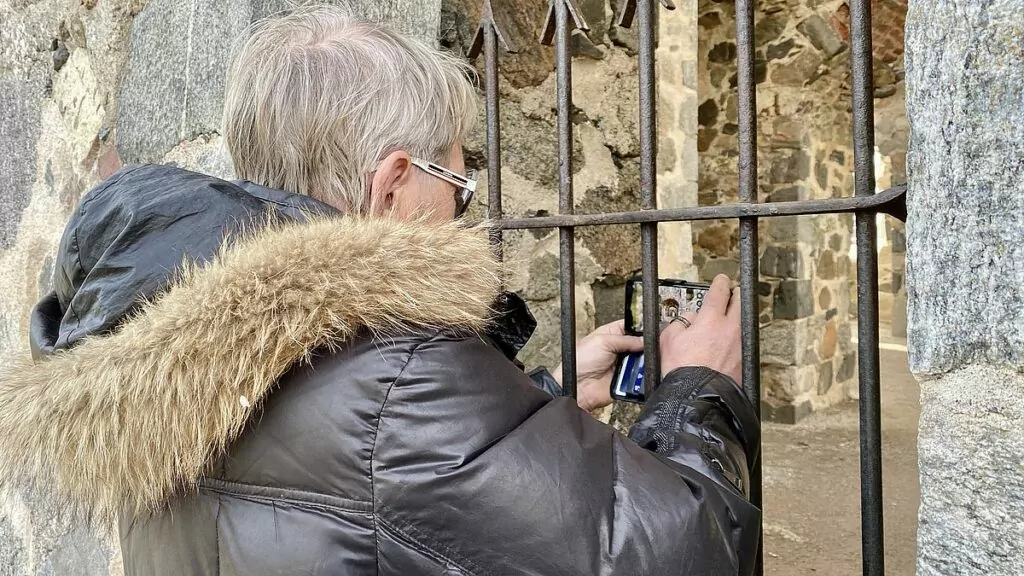
1. St Olav's church ruin in Sigtuna, Sweden.
The construction of St Olav's Church probably began in the early 12th century. Several excavations have been carried out here because of curiosity about the church's unusual architecture. The chancel is larger and longer than the nave, indicating that there was probably a plan to build an equally powerful nave, but for some reason the construction stopped.
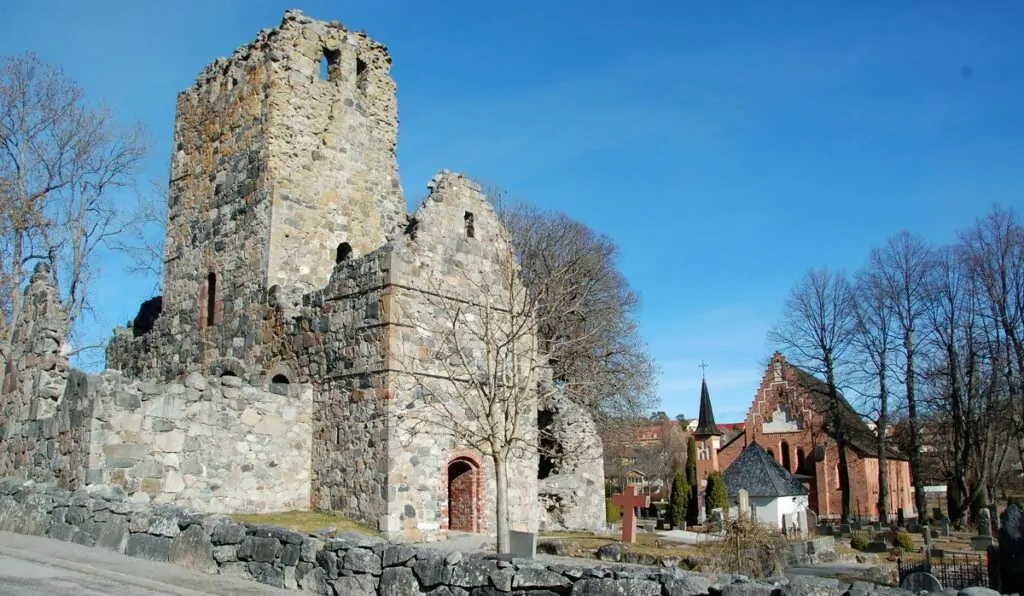
The excavations have also shown that the church ruin you see today rests on an even older building, which is perhaps the very oldest stone church in Sweden. Right next to the church there is also a small house with a dried-up well. The house is older than the church and may have been built here because a holy spring was found.
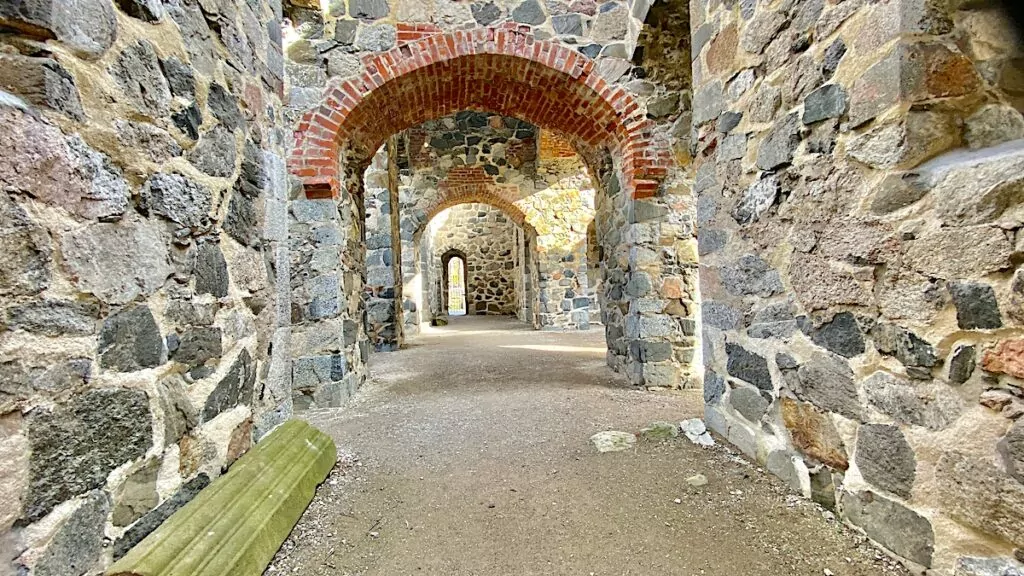
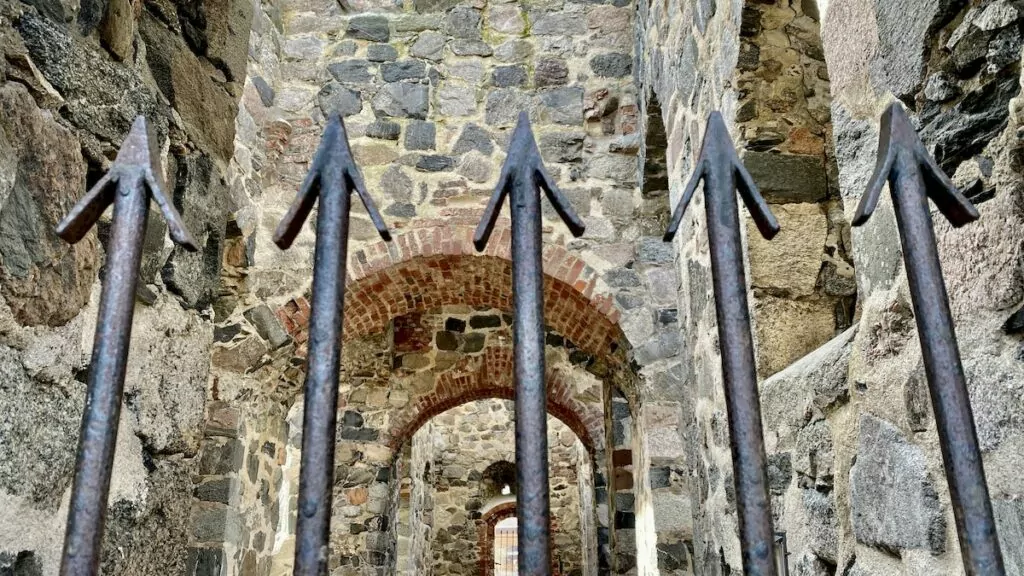
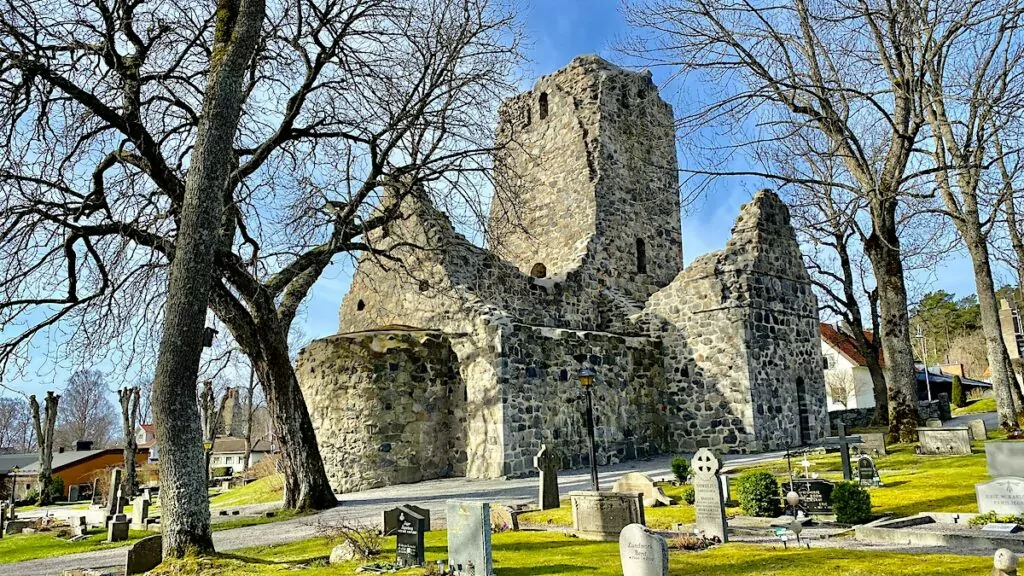
St Olav lived around the year 1000, was King of Norway and also the country's national saint. In the early 11th century, he travelled through Sigtuna several times. Today the town is interesting to visit for several reasons. Among other things, you will find several fine Swedish church ruins here.
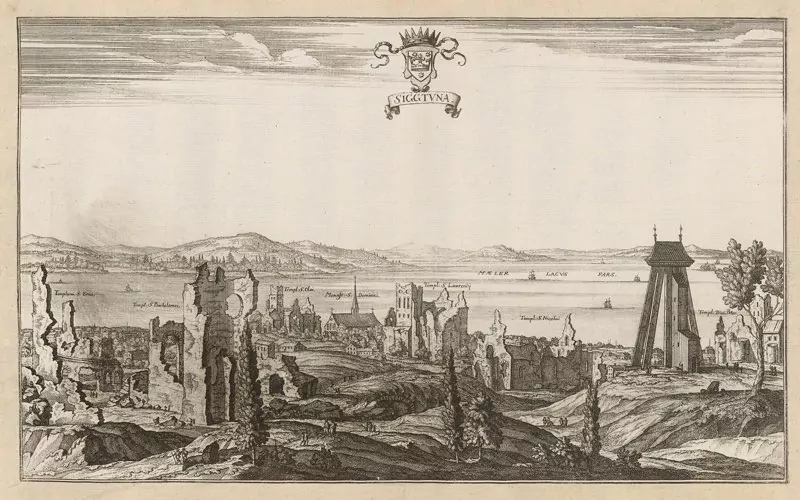
Find here: St Olav's Church Garden is located in the cemetery west of St Mary's Church in Sigtuna. Sigtuna is located on Lake Mälaren about 20 minutes from Upplands Väsby.
2. St Peter's church ruin in Sigtuna
Sigtuna is also home to the St Peter's Church ruins. St Peter's Church was completed around 1100, and can probably be directly linked to the royal authority. It is also thought that this church may have been the cathedral of the archdiocese before the move to Gamla Uppsala in 1190.
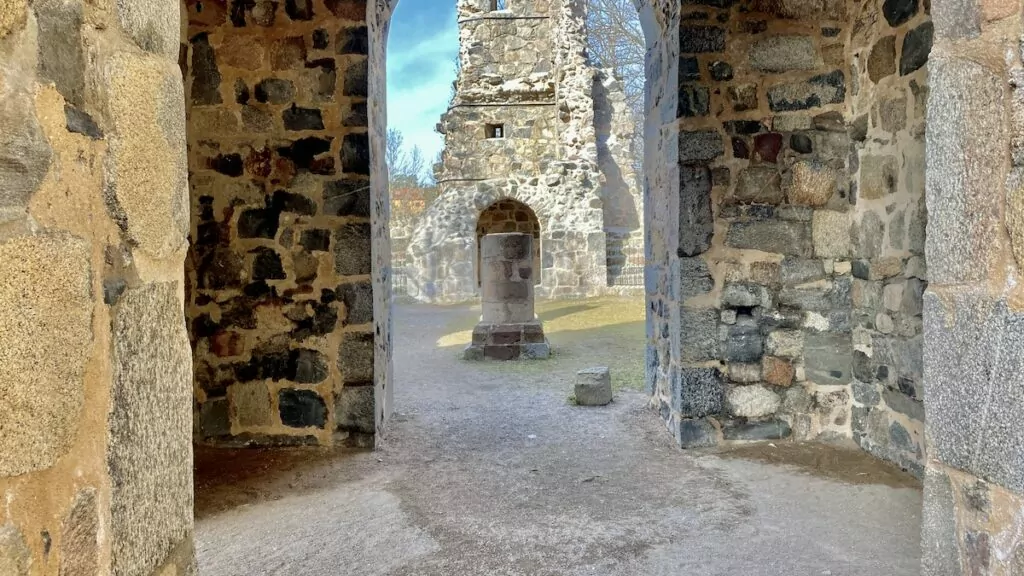
When King Erik Segersäll founded Sigtuna in the 980s, it was to create a kingdom inspired by the kingdoms of southern Europe. At this time, the royal power was struggling to strengthen the kingdom and its role as head of the church. To achieve this goal, it was therefore important to cooperate with the church and create a Christian city.
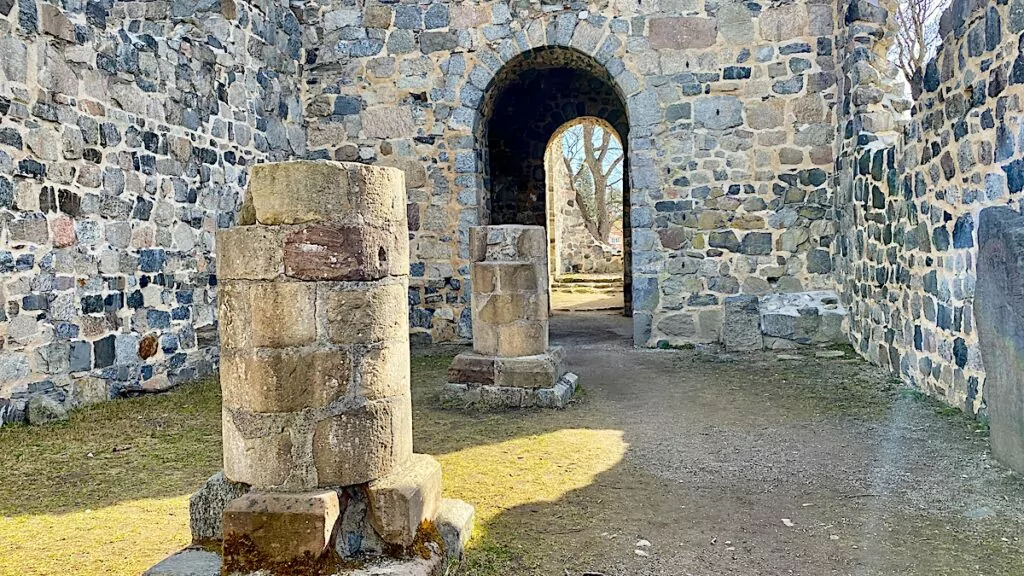
There is a portal high up in the façade of the central tower facing the nave. This may have been used as a coronation portal where the king appeared during the year's festivities, thus reinforcing his position as a man closer to God.
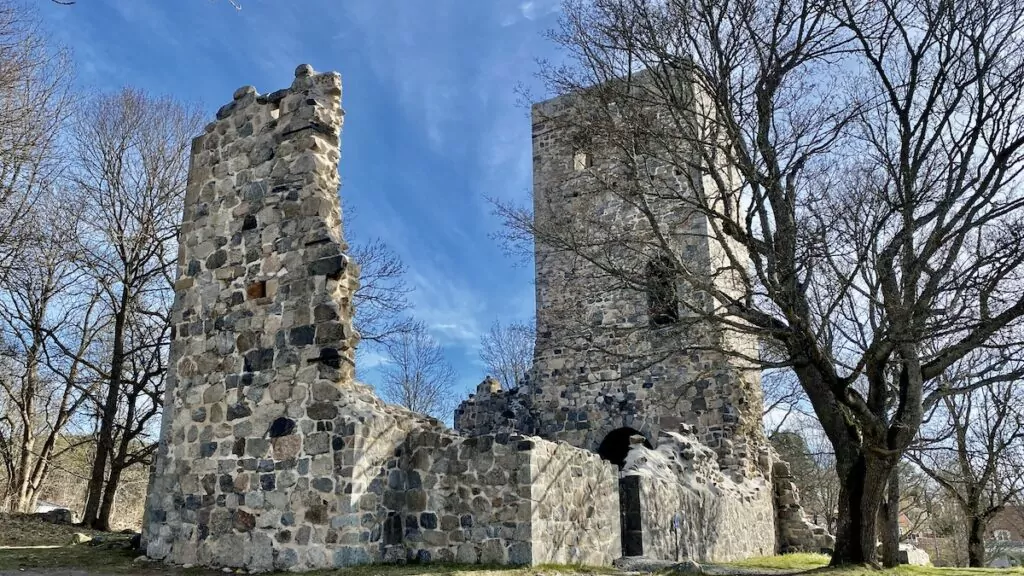
Find here: Sankt Pers kyrkoruin is located in Sigtuna, west of the medieval city centre. Sigtuna is located on Lake Mälaren about 20 minutes from Upplands Väsby.
3. Rytterne church ruins outside Västerås.
In the vicinity of Tidö Castle there are two Swedish church ruins worth looking at, Stora and Lilla Rytterne church ruins. The ruins are among the oldest Christian monuments in Västmanland, dating back to the 13th or 14th century.
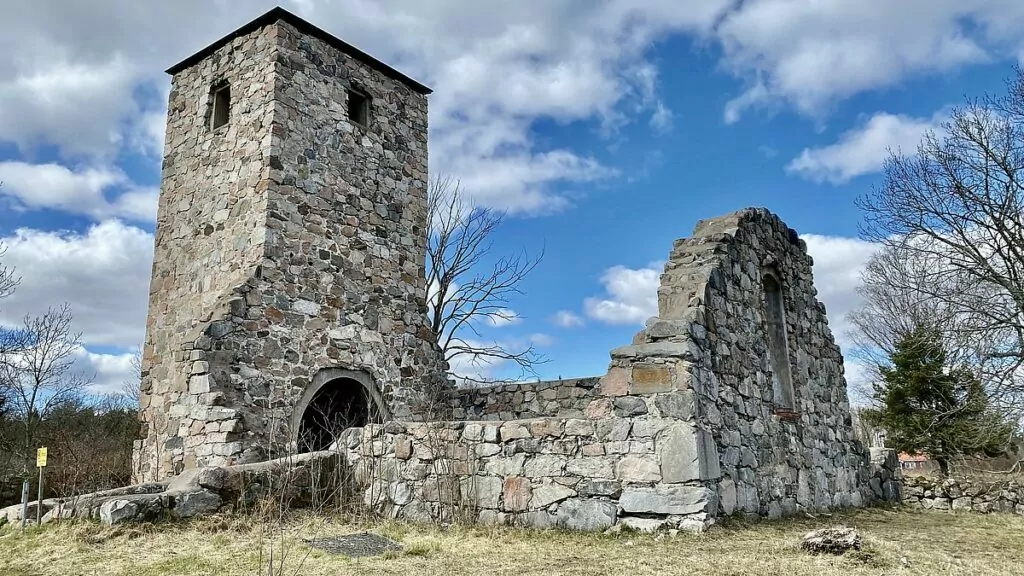
The last service in Lilla Rytterne Church was held in 1817 and today both churches are ruins. The unique thing about the churches is that they had towers built into the church, which was new in the 13th century and something that not everyone could afford to build. Today, traces of the old churches can be found in the new Rytterna church, including a baptismal font from the 12th century and an altar cabinet from the 15th century.
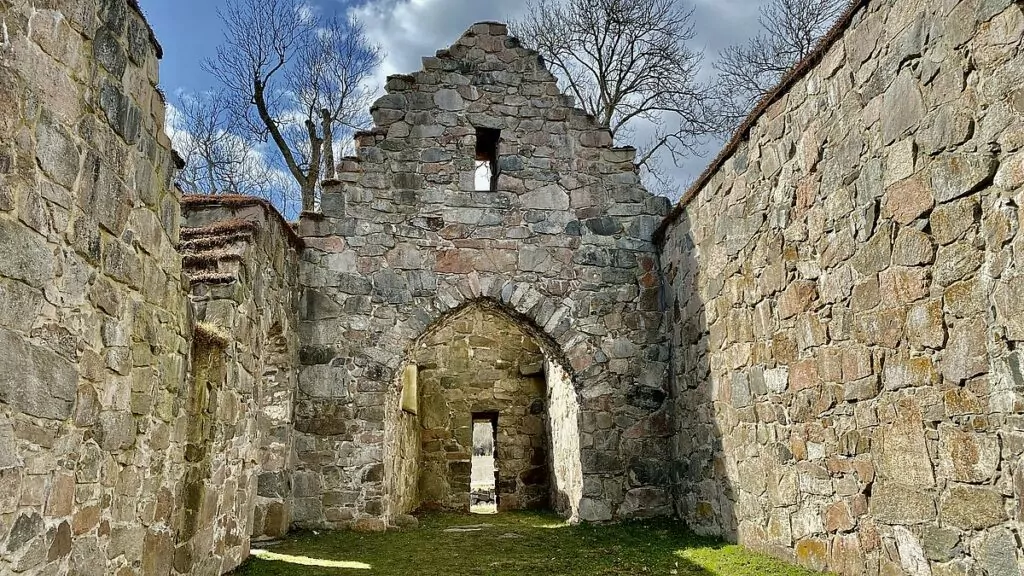
At Stora Rytterne church ruin there are burial slabs from the 17th century and two rune stones from the beginning of the 11th century. Those who erected these stones were Christians, but the site may have been a gathering place even in pre-Christian times.
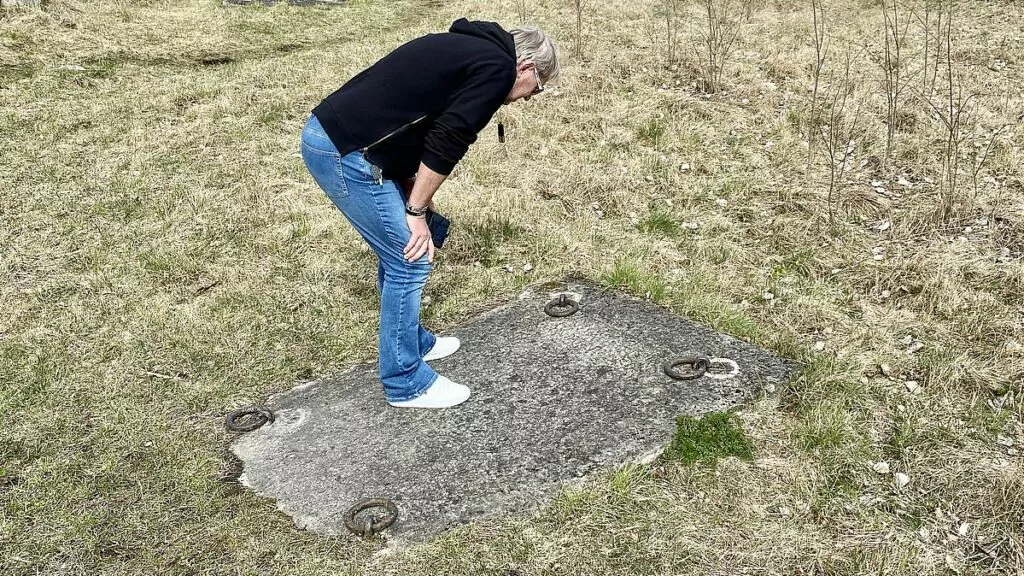
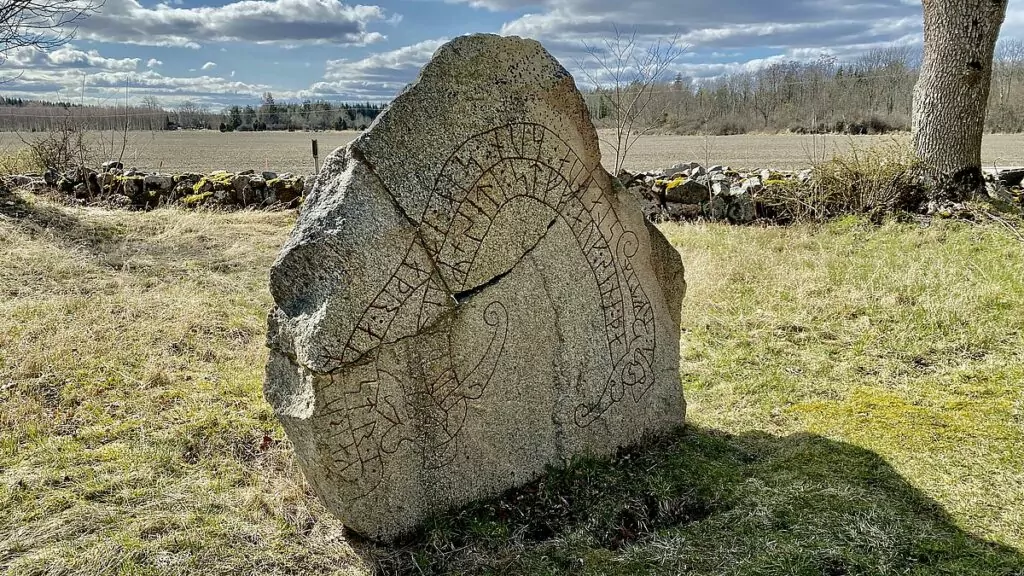
Find here: The small and large Rytterne church ruins are located along the Tidö tourist route in Västerås, 4.9 kilometres apart.
4. Kärnbo parish church in Mariefred.
Kärnbo parish church was built at the end of the 12th century and then consisted of a nave and a narrower chancel with a semi-circular ending on the short wall. In the 16th century, the nave was extended and a porch was added. On the long side of the porch is a rune stone that tells the story of Ragna, who had the stone erected after Gudbjörn's son, a young man.
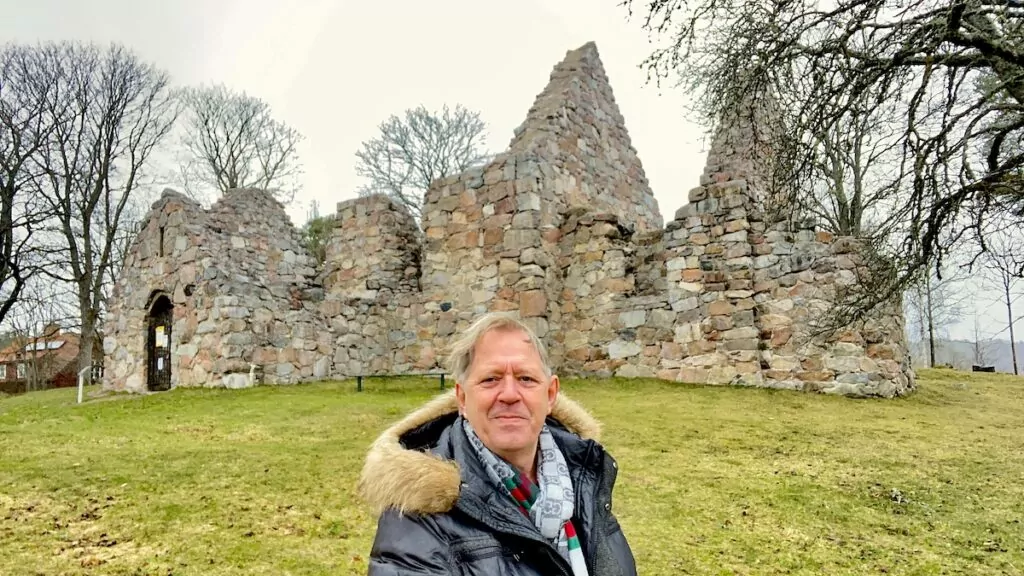
In 1624 Mariefred's church was completed and Kärnbo church was plundered. By 1758 there was a risk that the roof would collapse and the rest of the inventory was removed. In the 19th century, the church had fallen into disrepair and the area was used as a pasture for pigs from Gripsholm's royal farm, and the church was popularly known as the pig church. The church ruins were renovated in the 1920s.
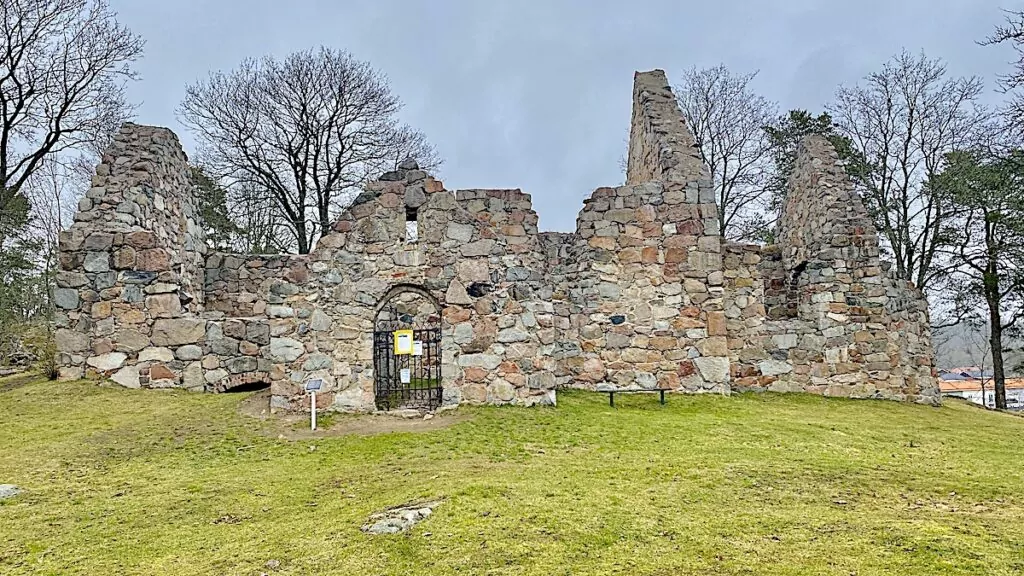
Find here: Take the E20 motorway to the Mariefred exit. Drive towards Gripsholm Castle on Stallarholmsvägen. Kärnbo parish church ruin is on the left side opposite Gripsholm Castle.
5. Vreta Abbey ruin in Ljungsbro
Vreta Abbey was founded as a Benedictine nunnery in the early 12th century. King Inge the Elder and his wife Helena donated the land for the monastery, which was one of Sweden's very first monasteries.
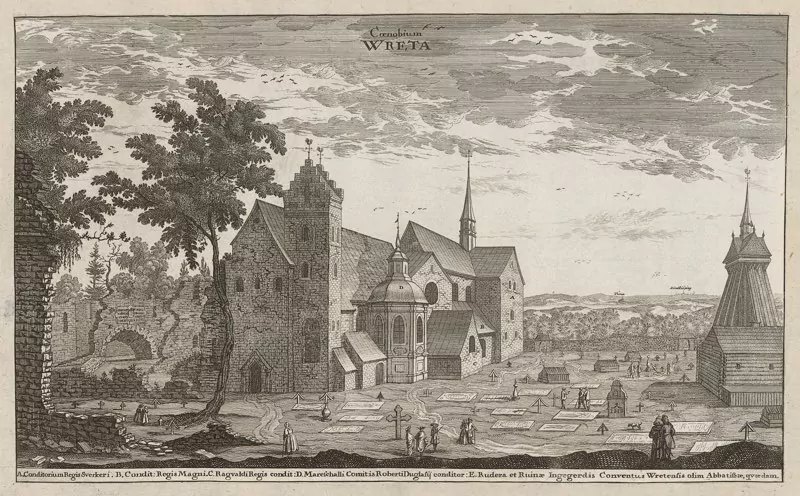
The monastery was active until the 1580s, when the last nuns died. Today, a partly reconstructed ruin of the monastery, the monastery church, a monastery house and many different buildings remain in the church village of Vreta Monastery.
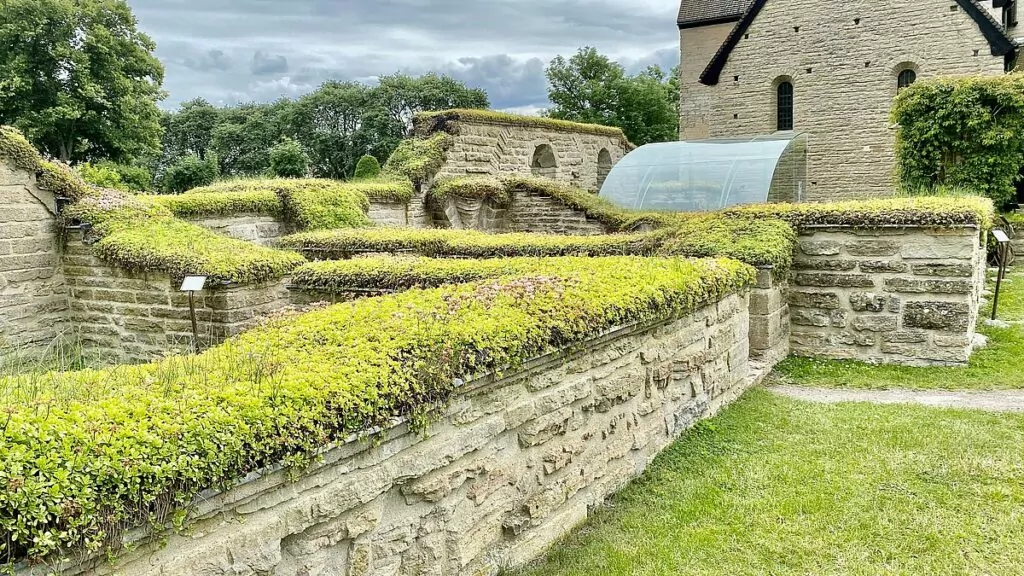
The monastery house is one of Sweden's few fully preserved monastery buildings, with an impressive stone warehouse from the 13th century. In one part there is an exhibition with both information and various preserved stone artefacts.
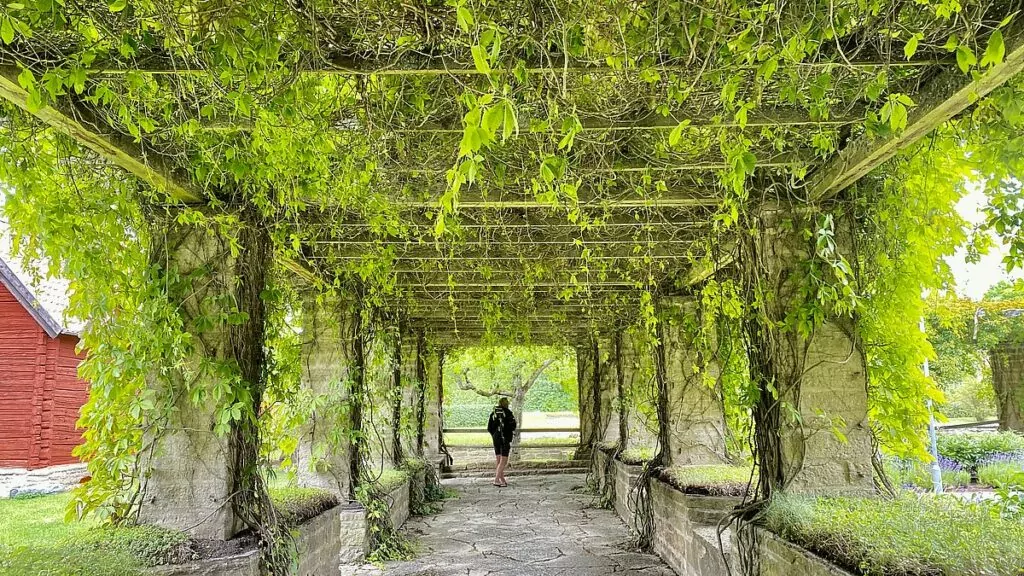
Find here: Take Stjärntorpsvägen to Berg in Ljungsbro. When you get to Berg's locks, there are signs to Vreta church and monastery ruins, which are located northwest of Linköping.
6. Alvastra monastery ruins in Ödeshög.
Alvastra Abbey was founded in the 12th century and, together with Nydala Abbey in Värnamo, was the first Cistercian monastery in the Nordic countries. As a predecessor, Alvastra subsequently founded the monasteries of Varnhem, Julita and Gudsberga.
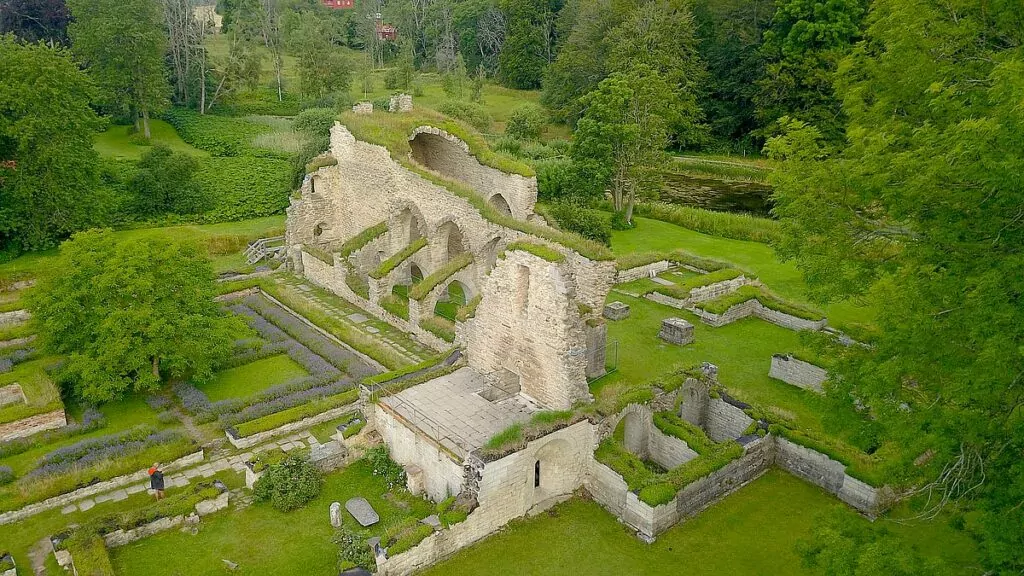
Alvastra Monastery is known, among other things, because it was here that St Birgitta received some of her most famous revelations. It was also here that she felt called to become "the bride and spokeswoman of Christ". Monastic life in Alvastra lasted until the monastery was dissolved around 1530, in connection with the Reformation.
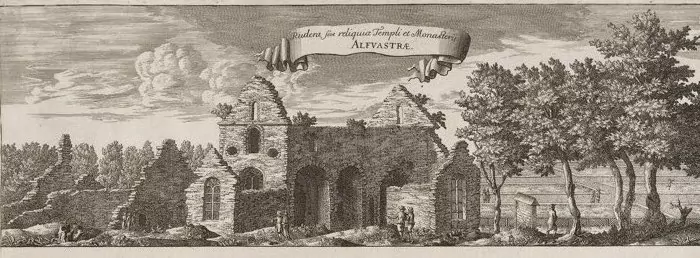
All that remains today are ruins, and you have to use your imagination to visualise what once was: The monastery church of St Mary, the sacristy, the monks' wing with dormitory and study, the library, the cloister, the monks' dining room, the infirmary, the abbot's house, the monastery courtyard and other buildings.
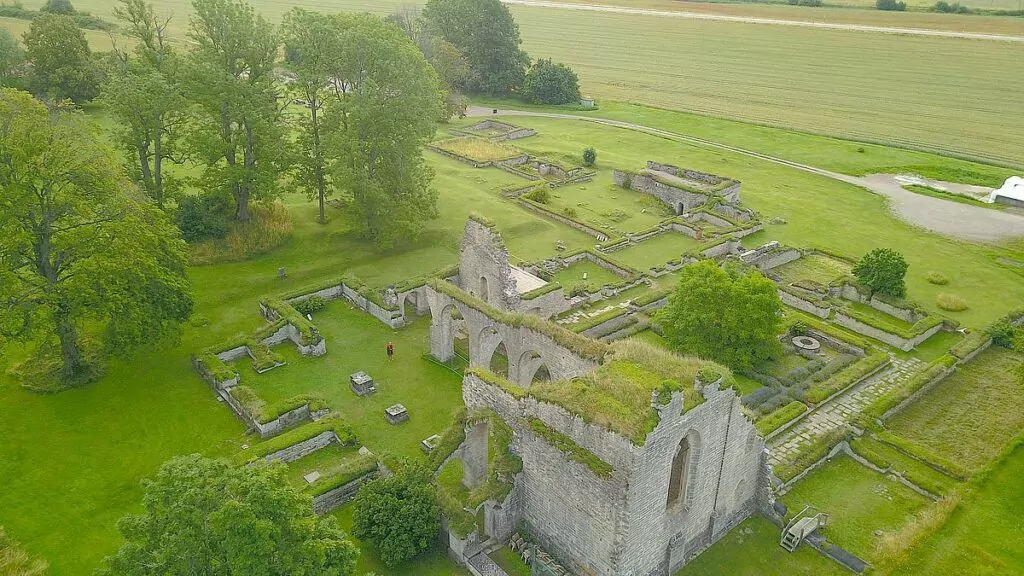
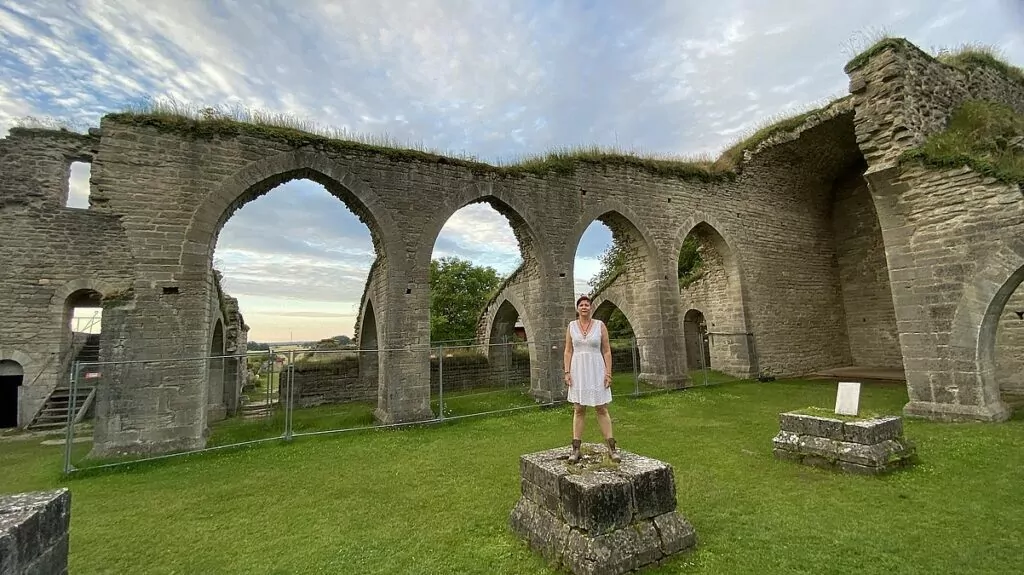
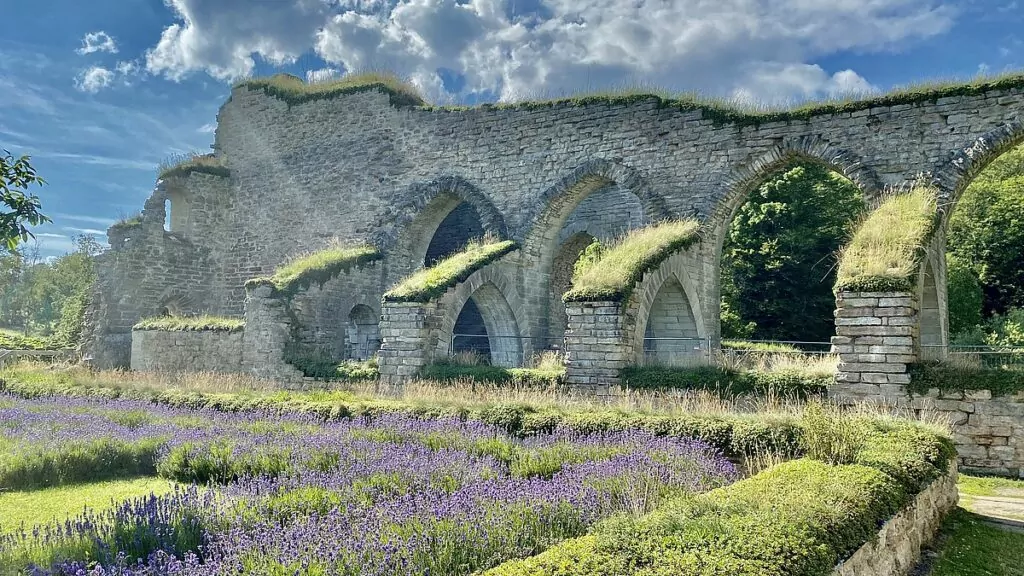
Find here: Alvastra Abbey ruins are located in Alvastra, at the foot of the Omberg mountain in the municipality of Ödeshög. The monastery is located on the eastern side of Lake Vättern.
7. Gudhem's monastery ruin in Falköping.
Gudhem Monastery operated as a nunnery between the 12th century and 1529. The monastery was affiliated with the Cistercian order and had its heyday in the 13th century.
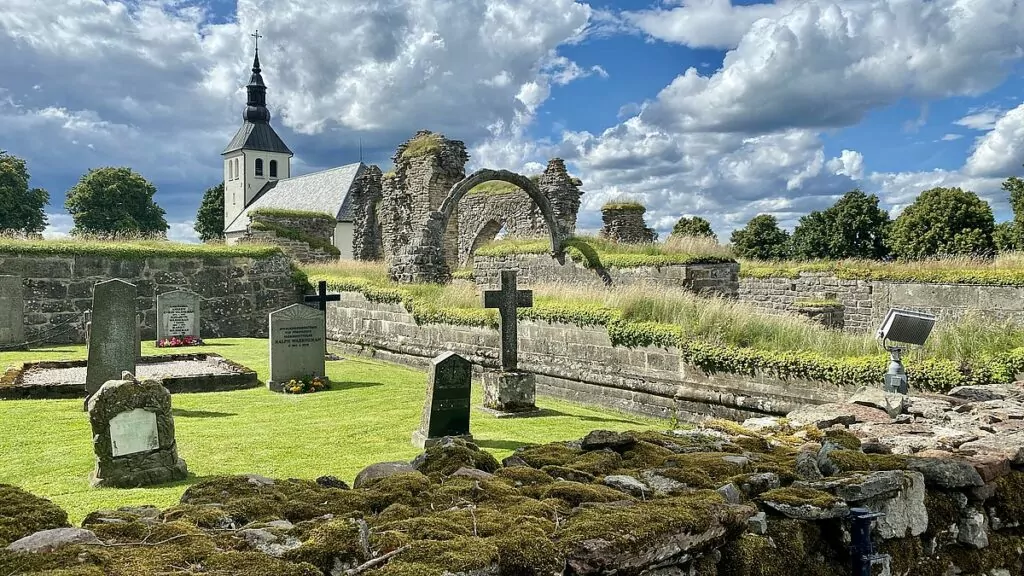
Around 1175, Gudhem manor was donated to the monastery by King Knut Eriksson. Another donor to the monastery was Katarina Sunesdotter, widow of King Erik Eriksson (1216-1250).
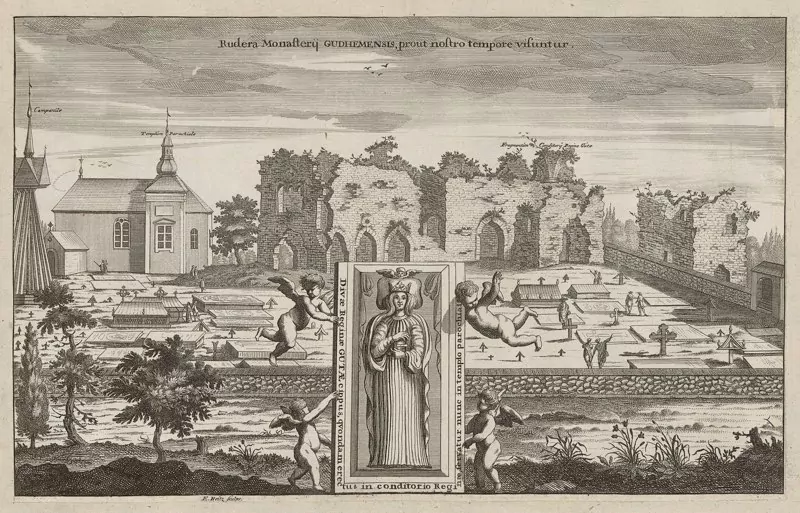
Next to Gudhem's monastery ruins is Gudhem Church, which was built sometime between 1160 and 1200. Nearby, you should visit Ekornavallen, a huge ancient burial ground. The oldest are from around 33oo BC and the youngest from the Viking Age, around 800-1050 AD and the largest is called Girommen.
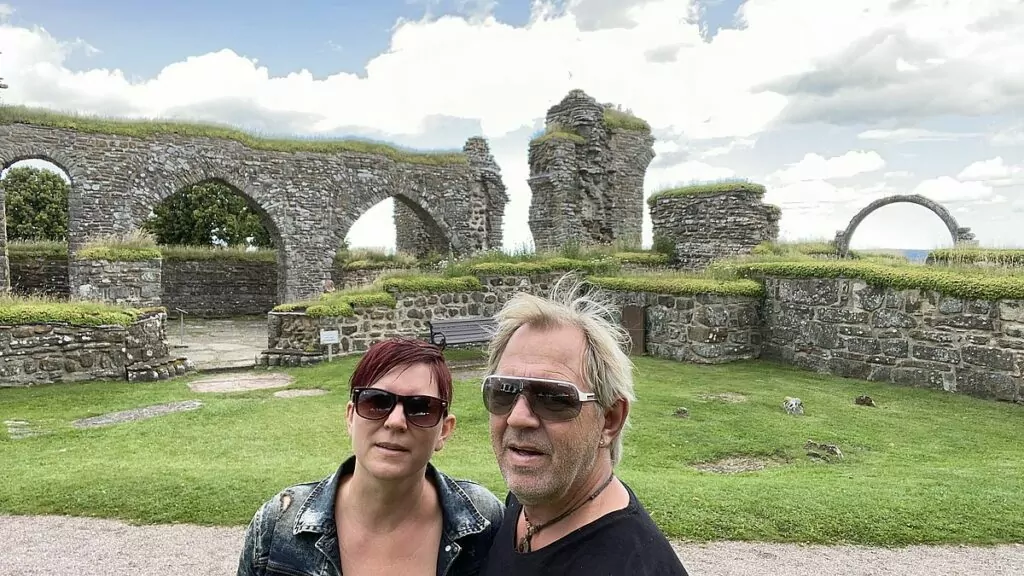
Find here: Gudhem's monastery ruin is located in Gudhem, less than a kilometre north of Falköping.
8. Ytterby Old Church in Kungälv, Sweden
Ytterby Old Church, now a ruin, is located in Ytterby in the municipality of Kungälv. The church was built in the 12th century in Romanesque style, in what was then Norway.
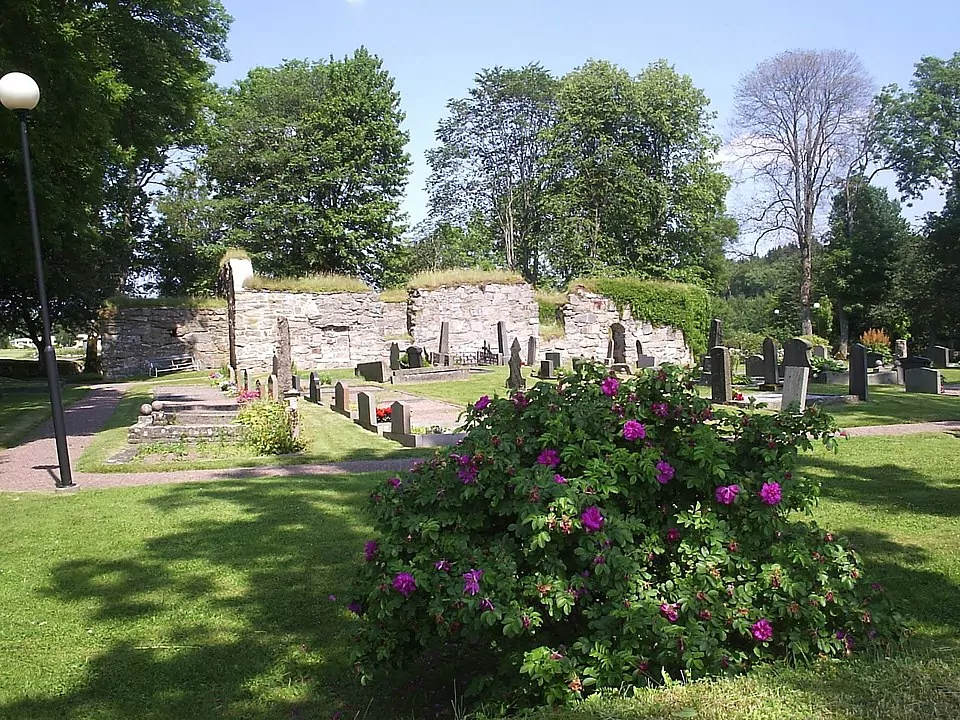
The church was for a long time called St Halvard's Church, as it was dedicated to St Halvard, the saint of seafarers. In one corner of the ruin is a stone with two sculpted heads, dating from the early Middle Ages.
These are said to represent St Halvard and a woman whom he tried to save from drowning, which instead led to his own drowning. According to the legend, the earth will end when the stone reaches the ground, which will happen one day if not prevented, as the walls settle and slowly sink.
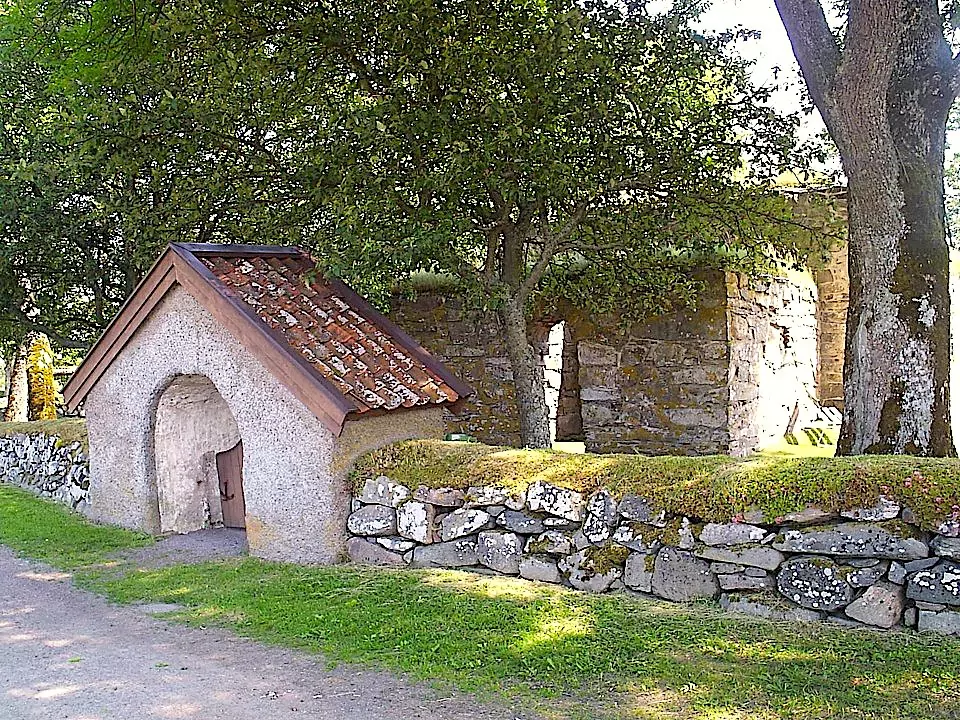
Find here: Ytterby Old Church is located in Ytterby in Kungälv municipality, about 6 kilometres southwest of Kungälv.
9. Gödestad church ruin in Varberg
The Gödestad church ruin is located near the new church of Gödestad, and not far from the Grimeton radio station in Halland. Gödestad's medieval church consisted of a rectangular nave without a chancel and had seating for about a hundred people. A bell tower stood to the west of the church.
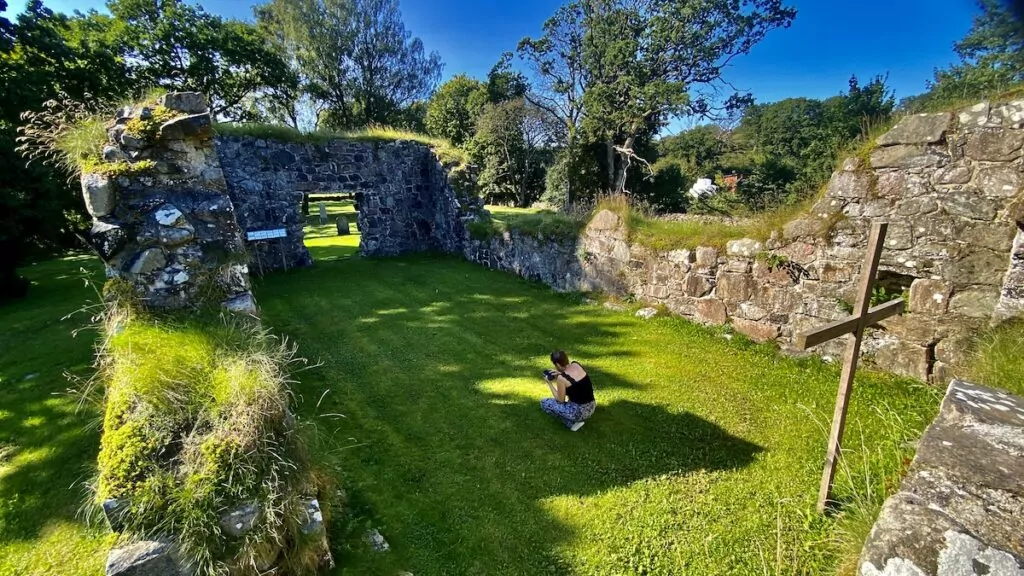
The medieval church was demolished when the new church was built in 1897, but the walls were so strong that they could not be completely demolished. The ruins were preserved in 1934.
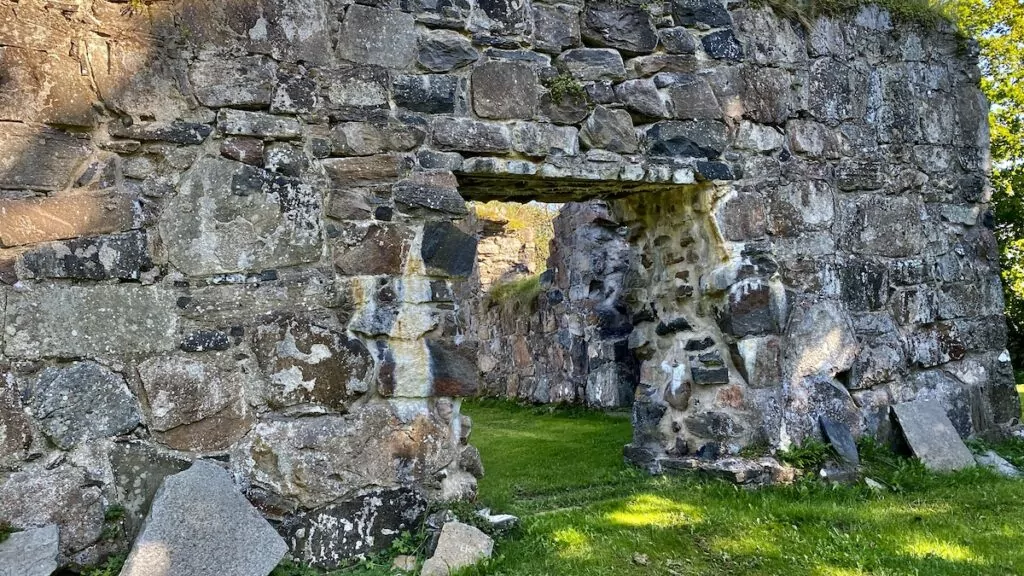
Around the church there is a cemetery with gravestones, and the site is now a listed building.
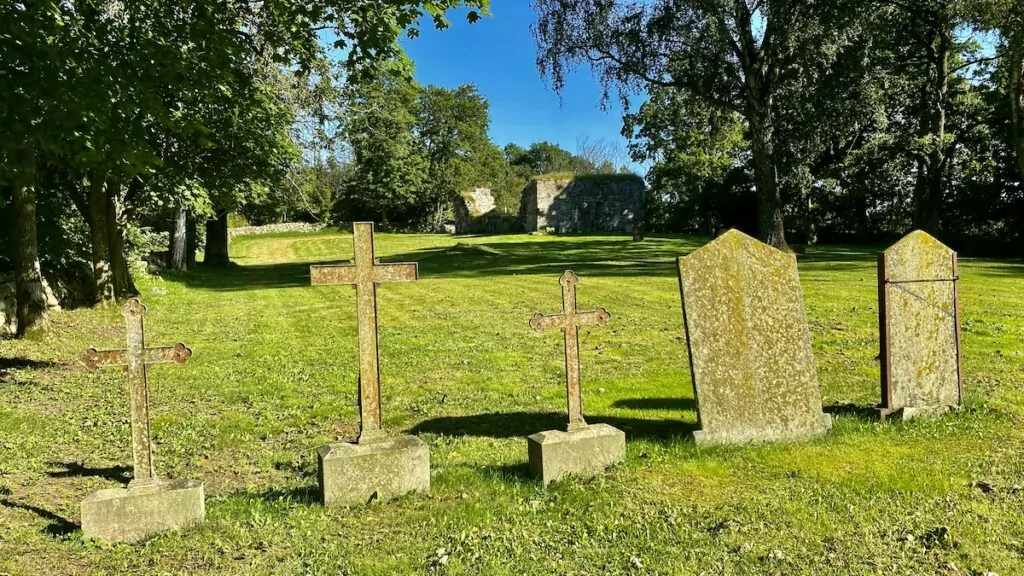
Find here: Gödestad church ruin is located about 12 kilometres east of Varberg in Halland.
10. Elinghem's island church on Gotland
Elinghems ödekyrka is a church ruin in Hangvars parish in north-west Gotland. The church was built in the middle of the 13th century and was until around 1600 the parish church in Elinghem parish.
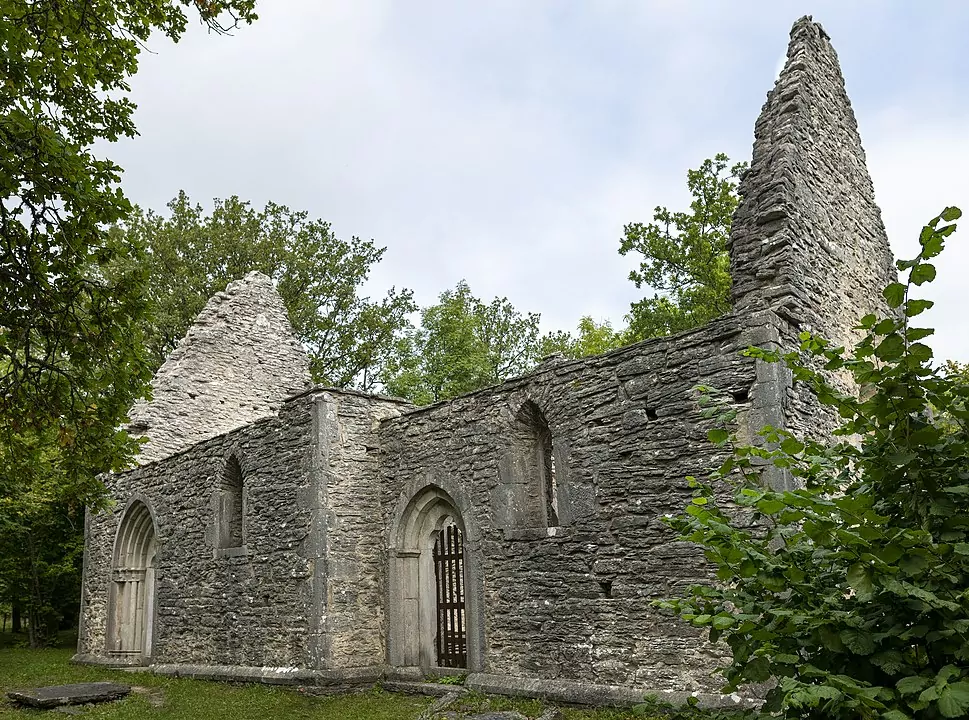
The church has been in ruins since the 17th century, possibly due to a fire. The last priest was Rasmus Rodeus who died in 1617.
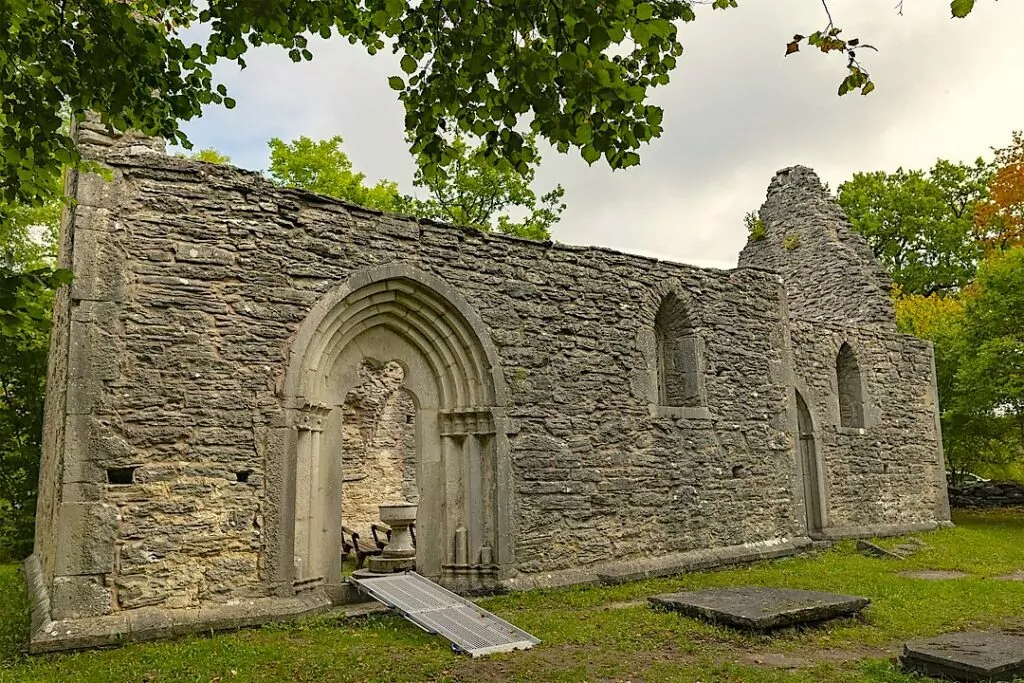
Find here: Elinghem's island church is located in Hangvars parish in north-west Gotland. Take road 149 northwards from Visby for 30 minutes.
11. Gann's island church on Gotland
The island church of Gann, which is a church ruin today, was built in the mid-13th century for the parish of Gann. The church was probably abandoned in the 16th century.
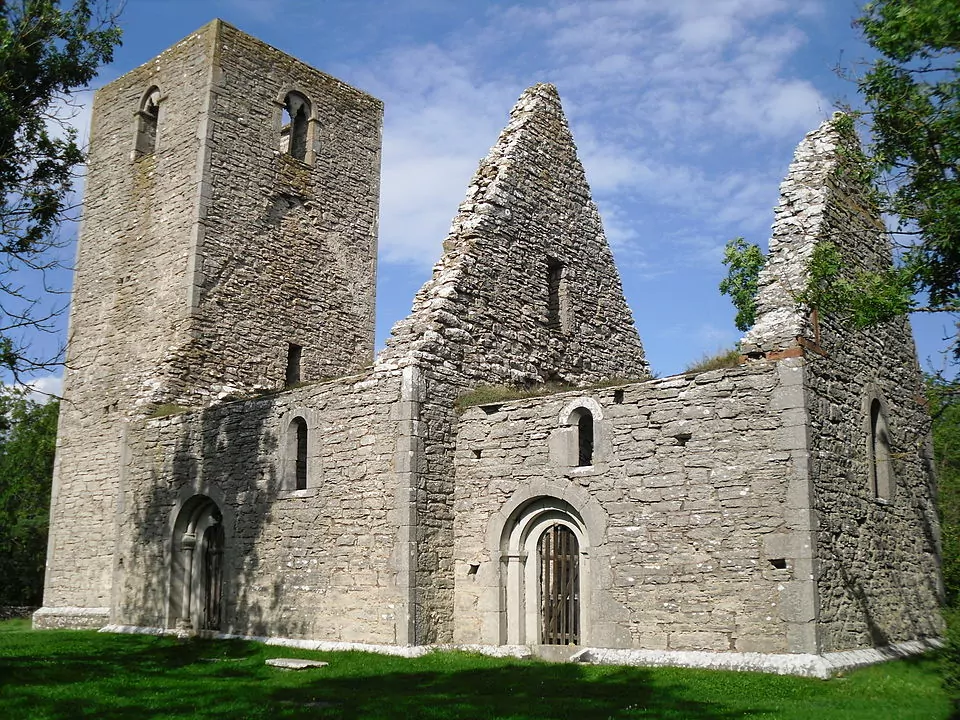
The ruin consists of two choirs, nave and a square tower and the church building has probably been plastered in its original state. This is one of the many Swedish church ruins on Gotland that we have not yet seen, but plan to.
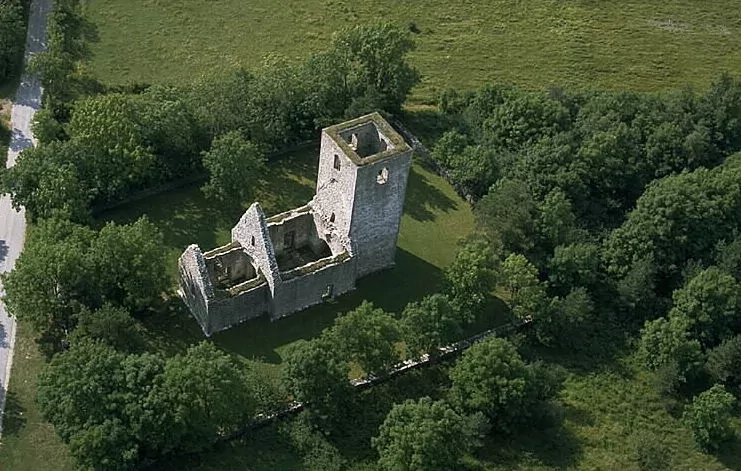
Find here: Ganns ödeskyrka is located north of Lärbo in Lärbo parish on northern Gotland. Take road 149 north from Visby for 50 minutes.
12. St Nicolai church ruin in Visby
The church of St Nicholas began to be built around 1220-1230, as a parish church for the Germans in the northern part of the city. The church was named St Nicholas in honour of Saint Nicholas, who was the patron saint of seafarers and merchants.
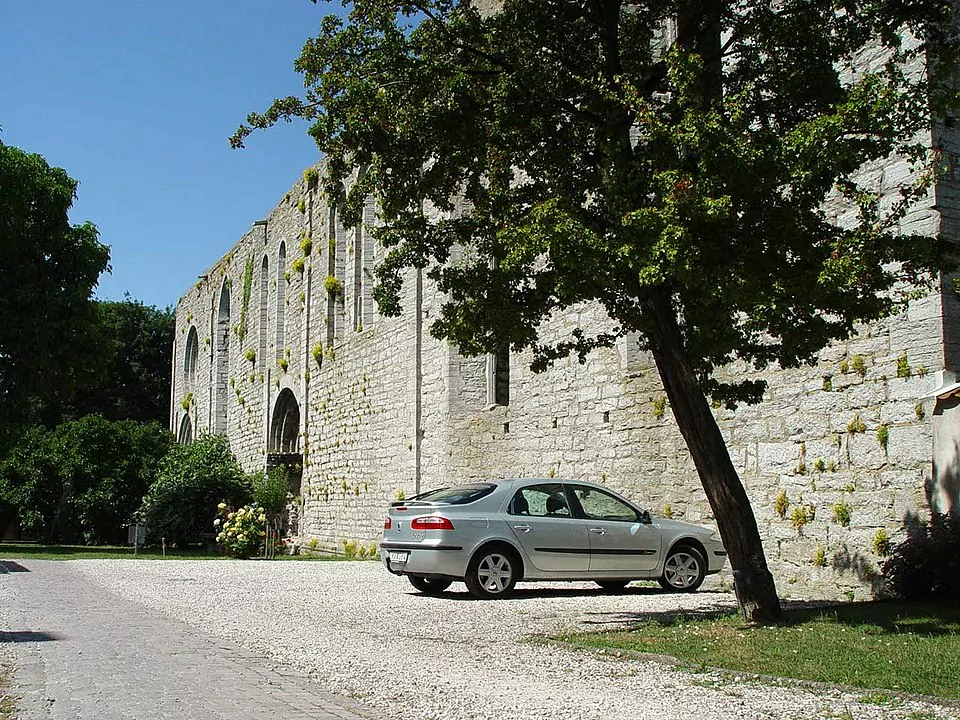
Unfortunately, a fire broke out during construction and the neighbouring cathedral was consecrated as a parish church. After the fire, St Nicholas Church was taken over by the Dominican brothers, who turned it into a monastery church. The church and monastery were burned when the Lübeckers attacked Visby in 1525 and due to the Reformation it was never rebuilt.
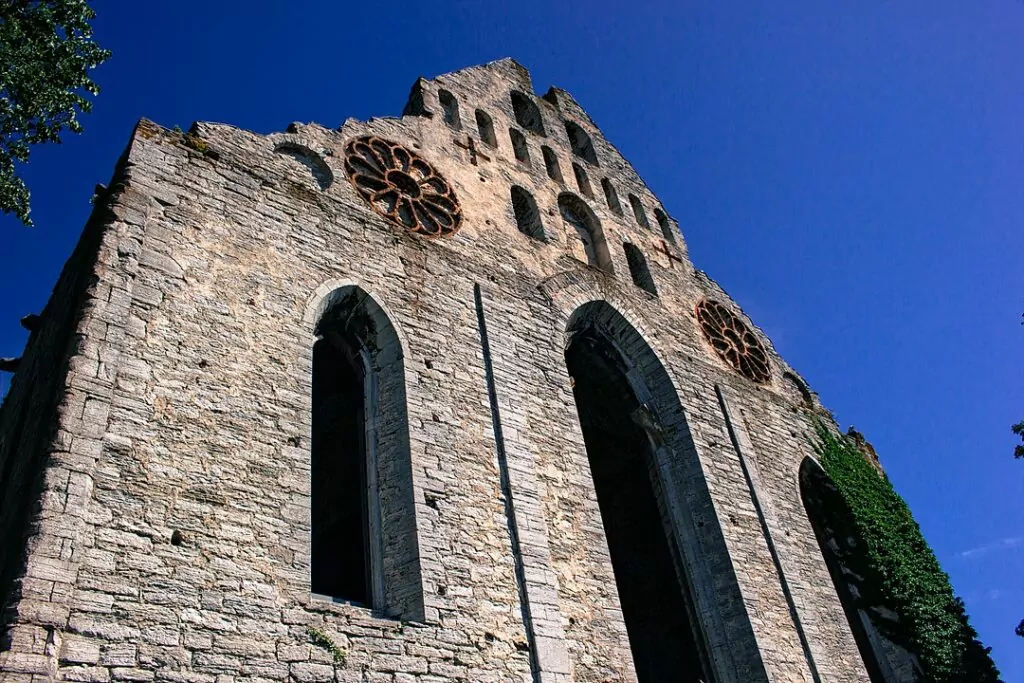
In the late 18th century, Mayor Peter Herman Grevesmühl allowed building materials to be taken from the ruin. Today it is sometimes used as a venue for concerts.
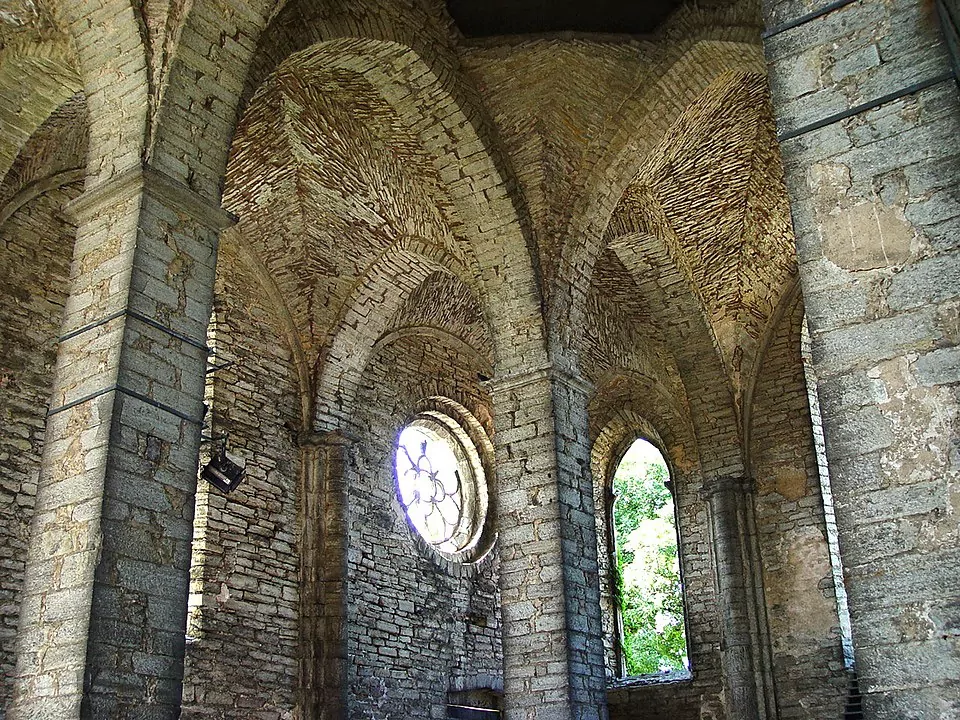
Find here: Sankt Nikolai kyrkoruin is located between Sankt Nikolaigatan and Smedjegatan, close to Visby Cathedral.
13. Drotten's church ruin in Visby
Drotten's Church was built around 1240 as a parish church for the Germans in the centre of Visby. The church was dedicated to St Trinitus, but was called the Trinity Church. Later it came to be known as "Drotten", which means prince or king, and in this case is more likely to be interpreted as the Lord God.
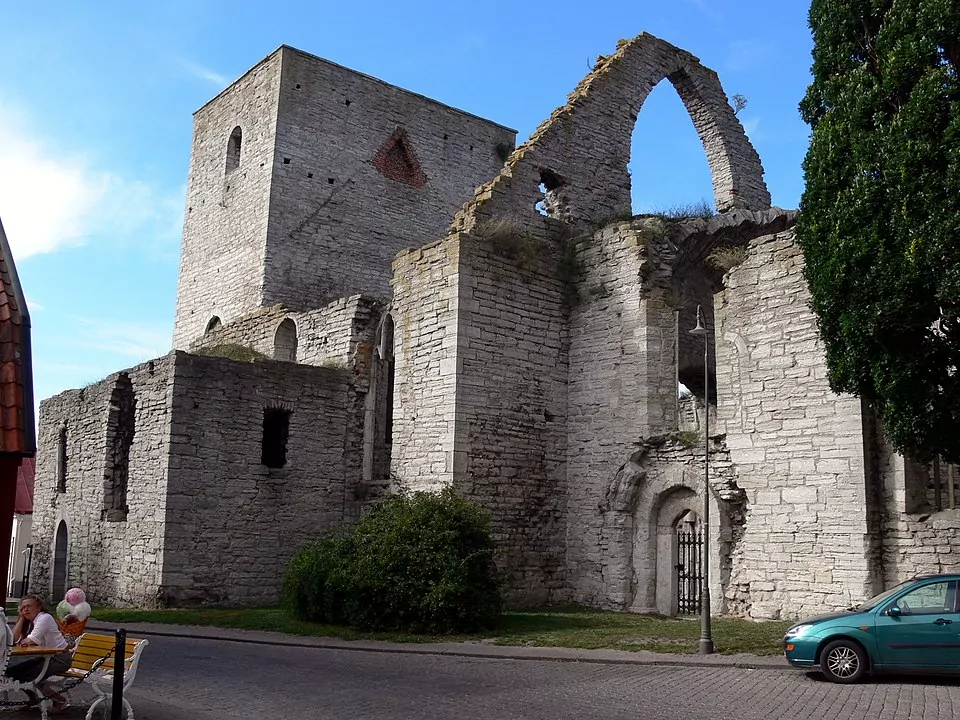
Right next to the Drotten church ruin is the St Lars church ruin. According to a legend, a rich merchant had two daughters who did not get along, and since they could not attend the same church, he had two churches built. The two churches are therefore sometimes referred to as sibling churches or sister churches.
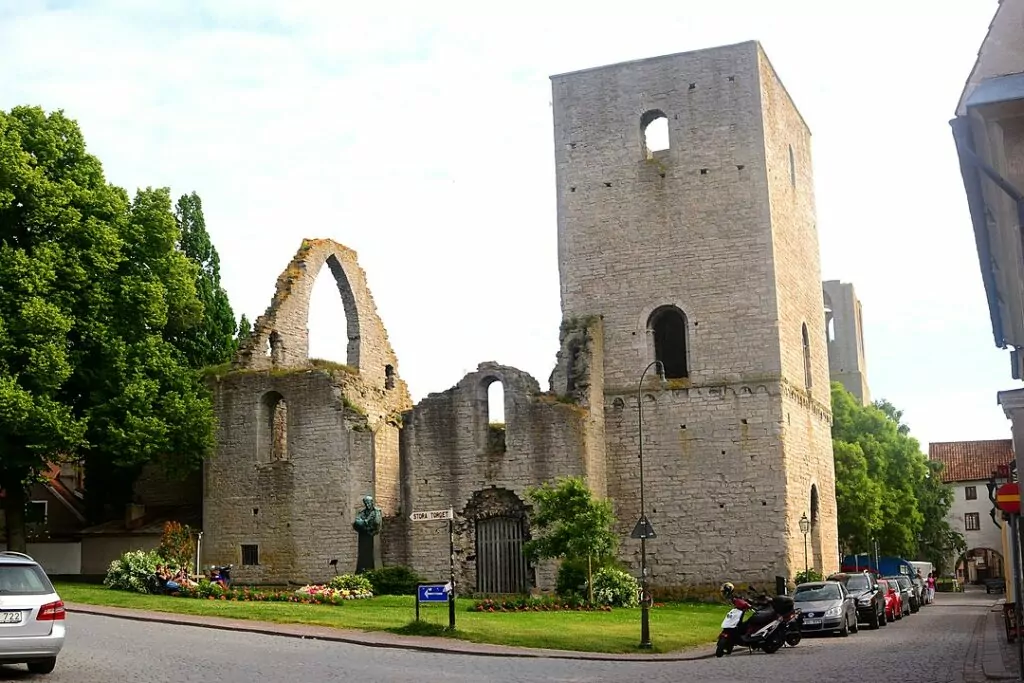
Find here: Drottens kyrkoruin (Sankt Trinitatis) is located at Syskongatan 4 in Visby city centre on Gotland.
14. St Lars Church ruin in Visby.
The church of St Lars was built in the early 13th century. The name of the church comes from the saint St Laurence, who was martyred on a burning straw after distributing church treasures to the poor and refusing to hand them over to the authorities.
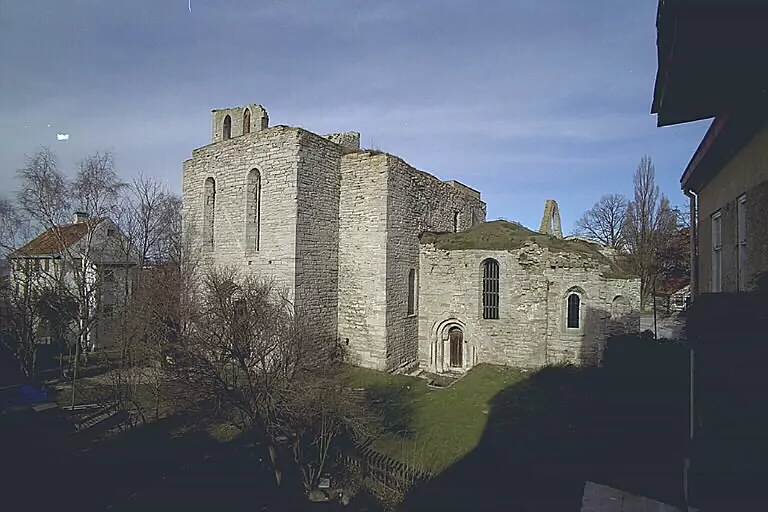
The church was probably completed around 1210-1220 and became the parish church for the growing population of Visby. Shortly afterwards, the Drotten church was built as the parish church for the Germans. Both churches were abandoned during the Reformation in the 16th century.
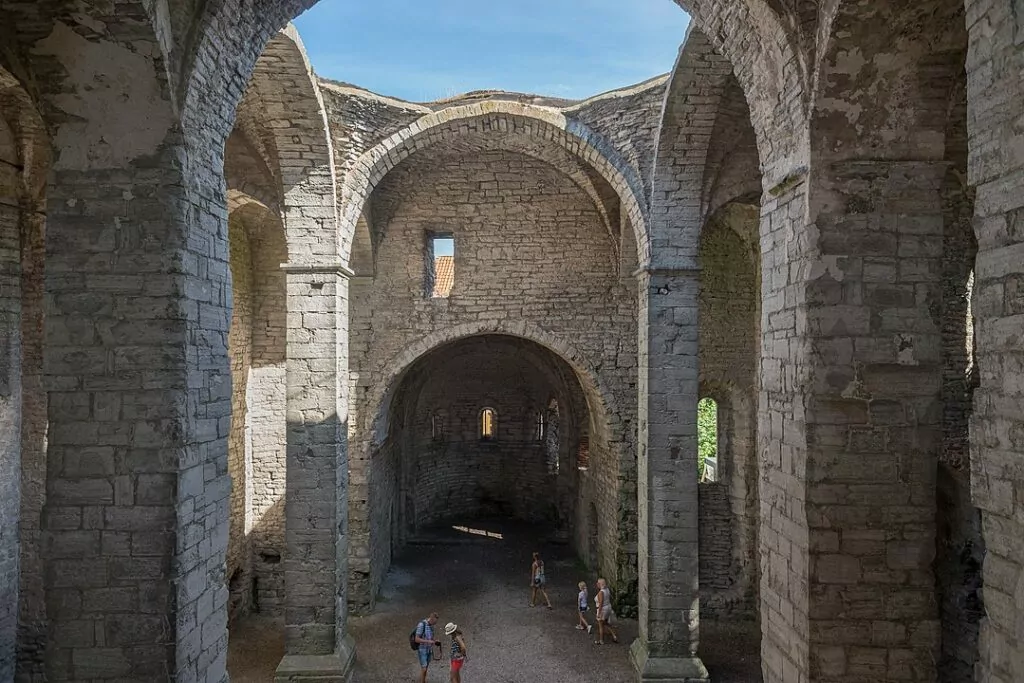
Find here: St Lars kyrkoruin between Syskongatan and Lybska gränd, north of Stora torget in Visby, Gotland.
15. St Clement's church ruin in Visby
St Clement's is one of the oldest churches in Visby. The oldest parts were probably built around the same time as St Hans, around 1060, when the town was divided into two parishes. Sankt Clemens was the parish church for the Gotlanders in the city's northern parish, Sankt Clemens Parish.
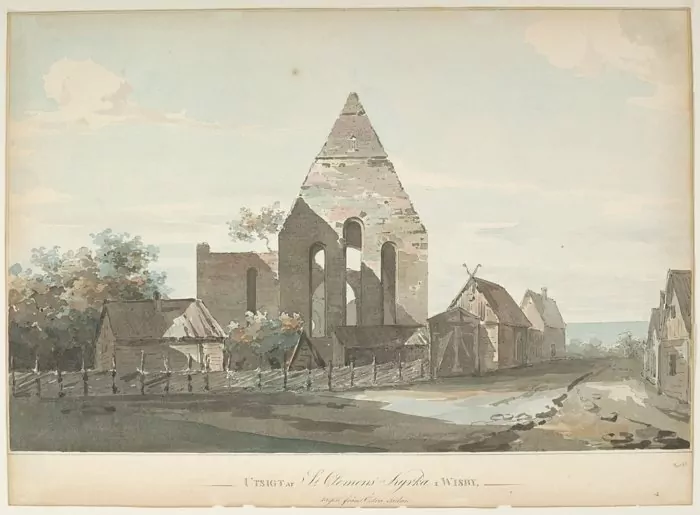
The name of the church comes from the saint St Clement, who is a seafaring saint and therefore suitable for seafaring Gotlanders.
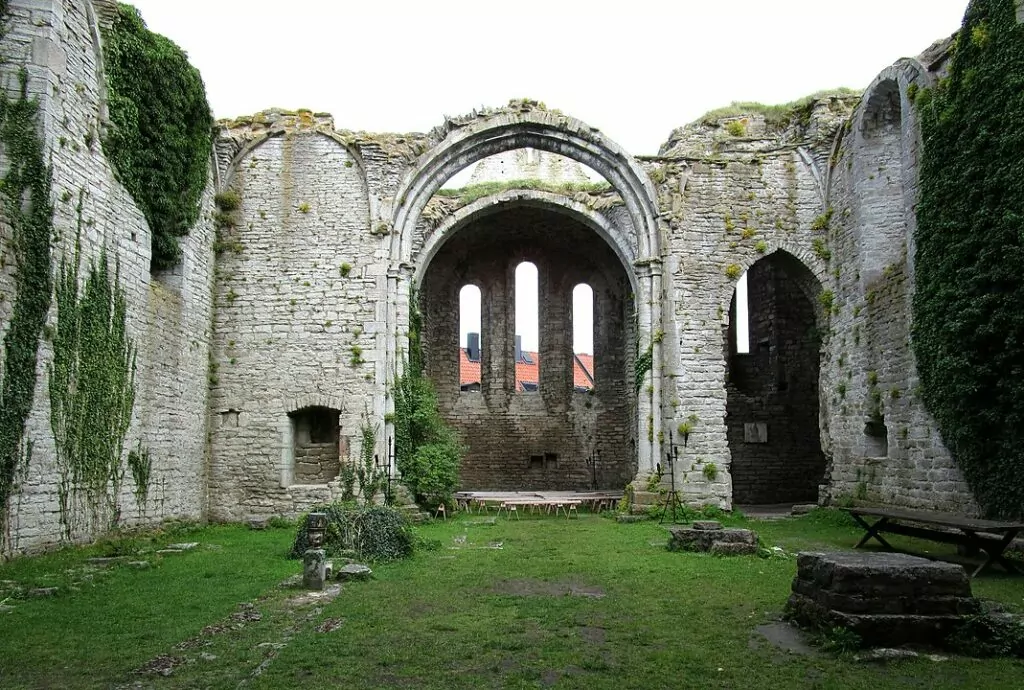
Find here: Sankt Clemens kyrkoruin is located at S:t Klemensgatan 6, above the botanical garden in Visby on Gotland.
16. St Göran's ruin in Visby
The ruins of the church of St Göran are located outside the Visby ring wall. The church dates from the 13th century and was built next to a hospital for lepers, which was used until the middle of the 16th century.
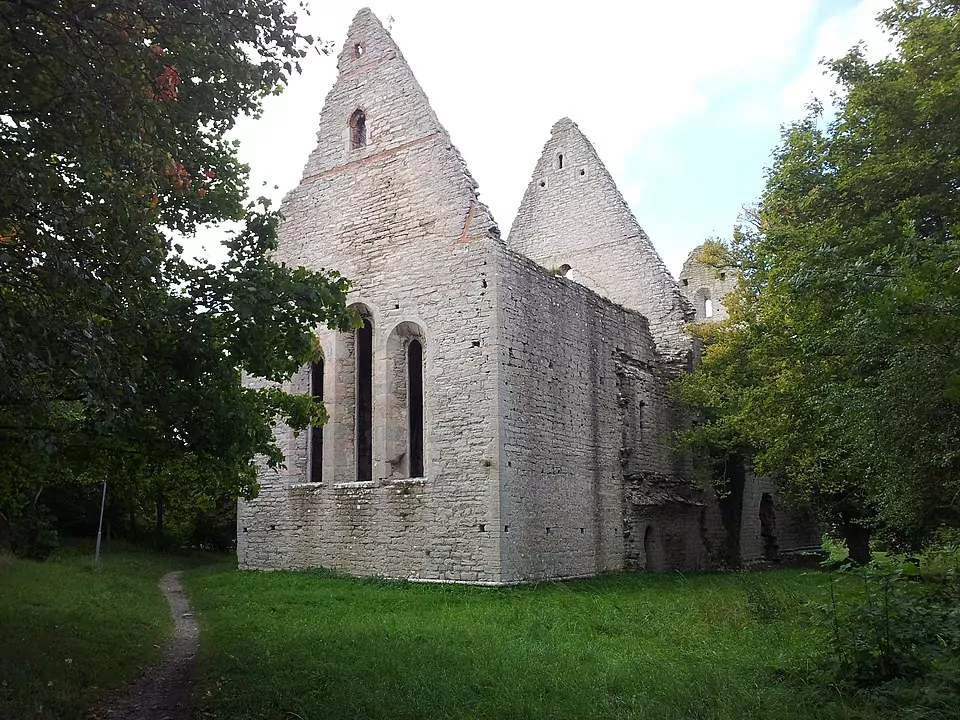
Because of the high risk of infection, the sick were not allowed to stay within the walls. The church was named after St Göran, the patron saint of lepers.
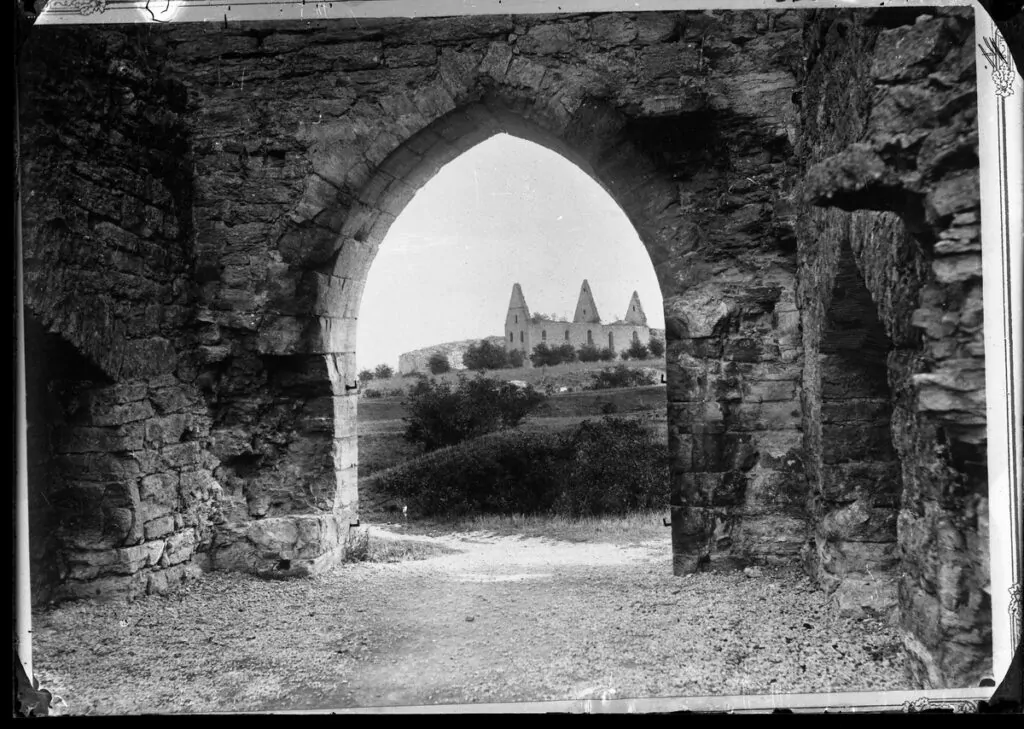
The church and hospital were abandoned by royal decree in 1542, but were used for a period after the city fire of 1611, when the Helgeandshospitalet was repaired. The ruins are not open to the public, but can be viewed from the outside.
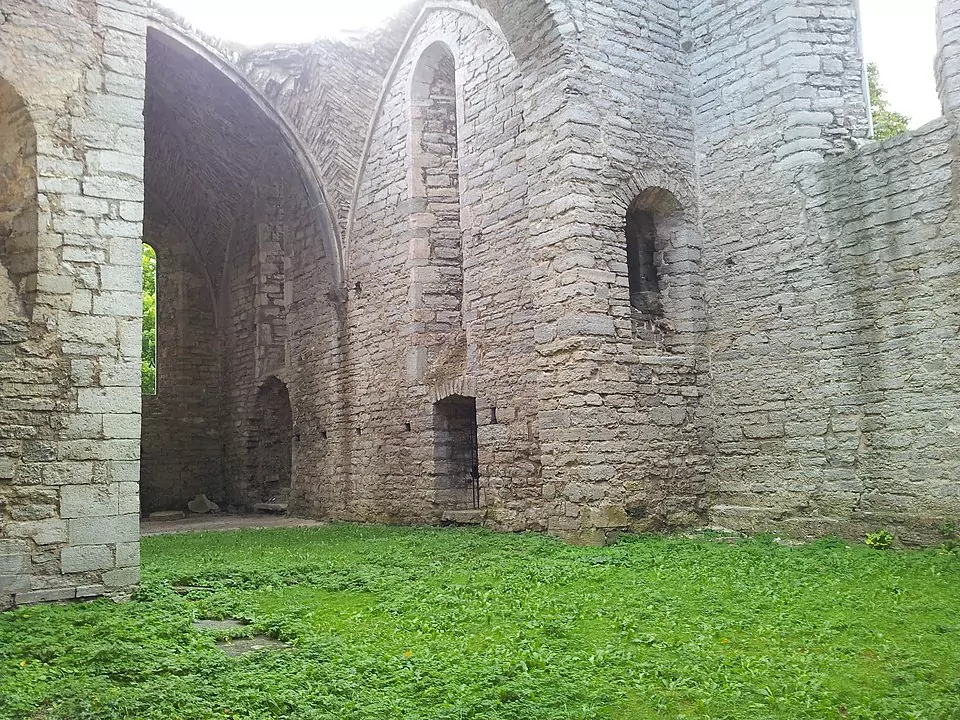
Find here: Sankt Göran's ruin is located at Munkstigen 10 outside the ring wall of Visby, on Gotland.
17. St Hans and St Pers church ruins in Visby.
St Hans and St Per are two conjoined church ruins in Visby on Gotland. The churches were built in the 13th century and were dedicated to St John the Evangelist and St Peter the Apostle. The oldest of these two, St Hans, was probably, together with St Clement, the first stone church built on Gotland.
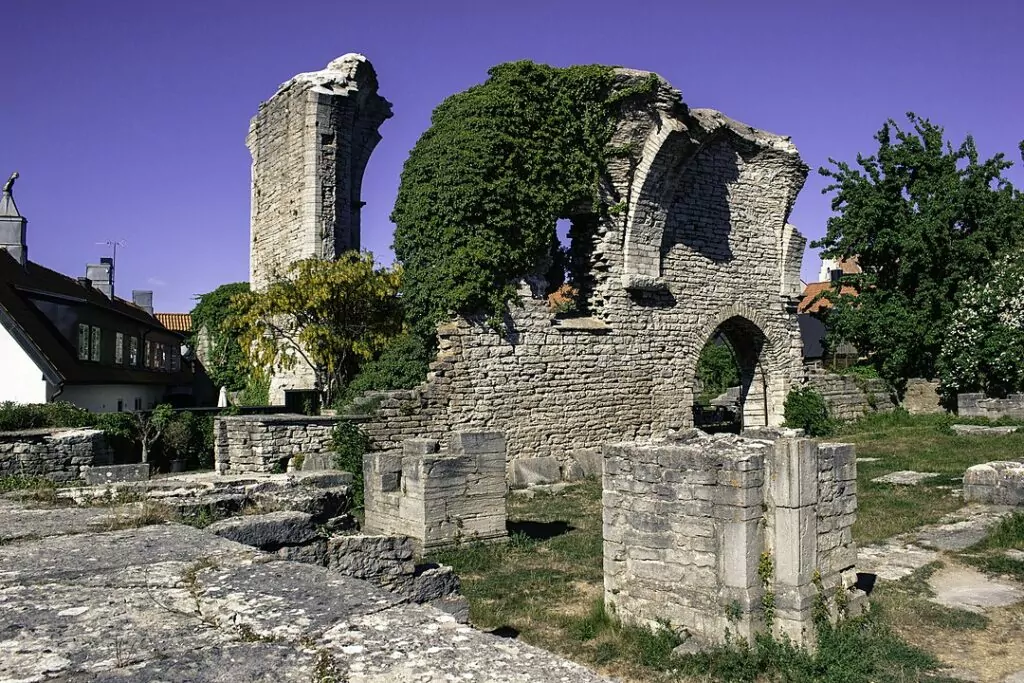
The churches were last demolished in the 17th century, as they are missing from maps of 1646 and 1696. However, piles of stone still remained at the beginning of the 19th century. The stone was used, among other things, to build the neighbouring Lythberg House.
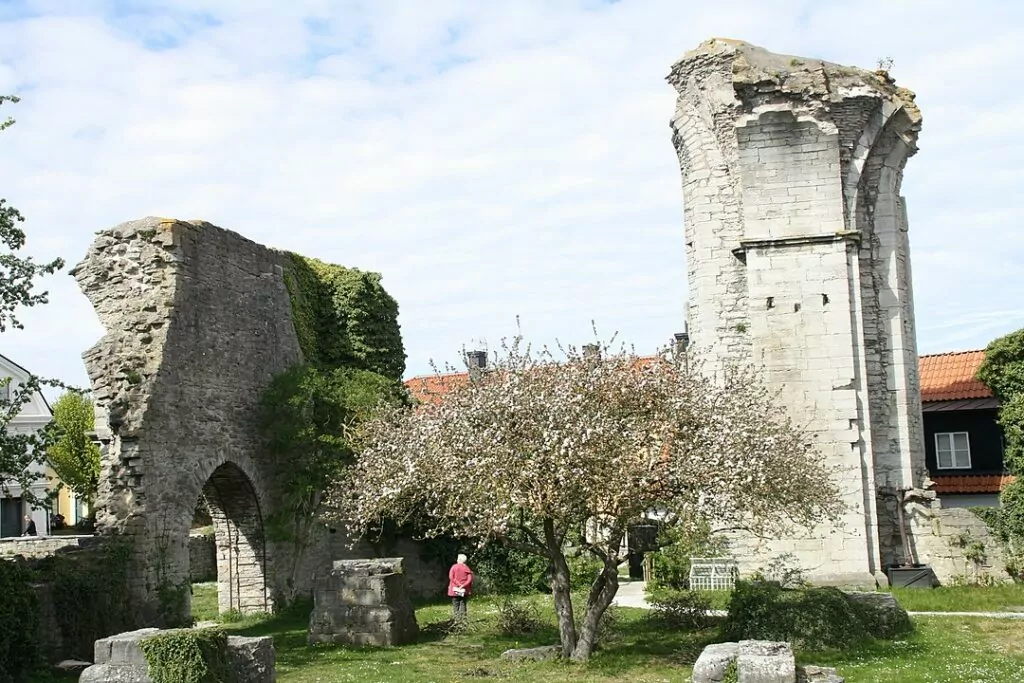
Find here: Sankt Per & S:t Hans kyrkoruin is located in the centre of Visby on Gotland on S:t Hansgatan and on S:t Pers gränd.
18. Holy Ghost Church ruins in Visby
Helige Andes kyrkoruin, or the ruin of Helgeandskyrkan, is a Swedish church ruin in Visby on Gotland. The church was built in the early 13th century, but its identity has been disputed.
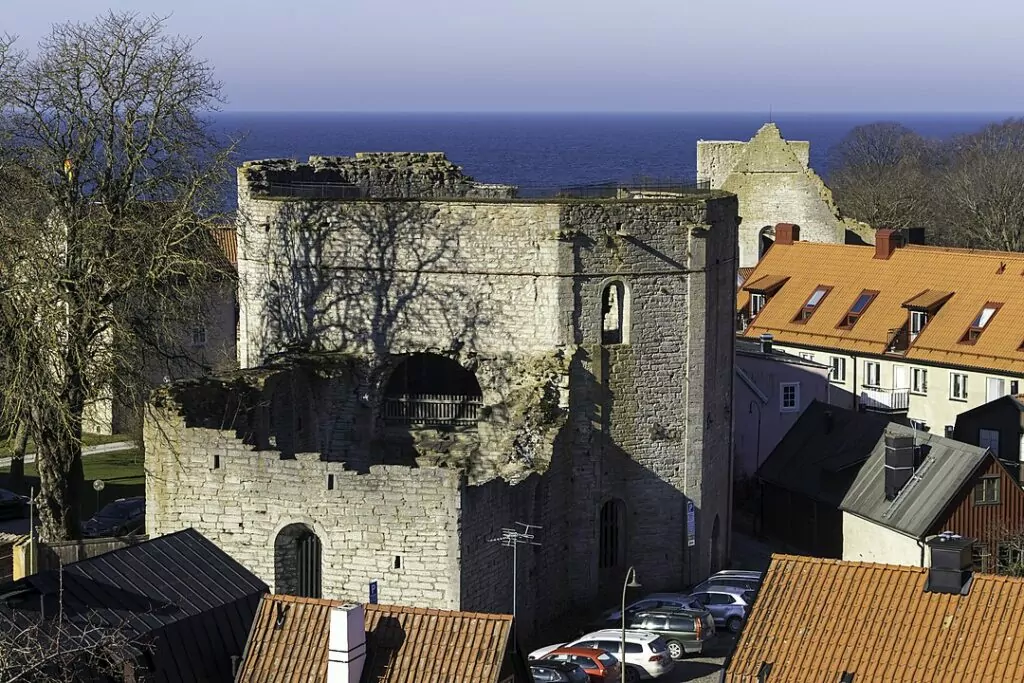
Some say the church was a chapel for the Danish Knutsgillet. Others argue that it was actually the church of St James, first mentioned in 1226 and belonging to the German bishop Albert i Riga. According to another theory, the church was built as a hospital church.
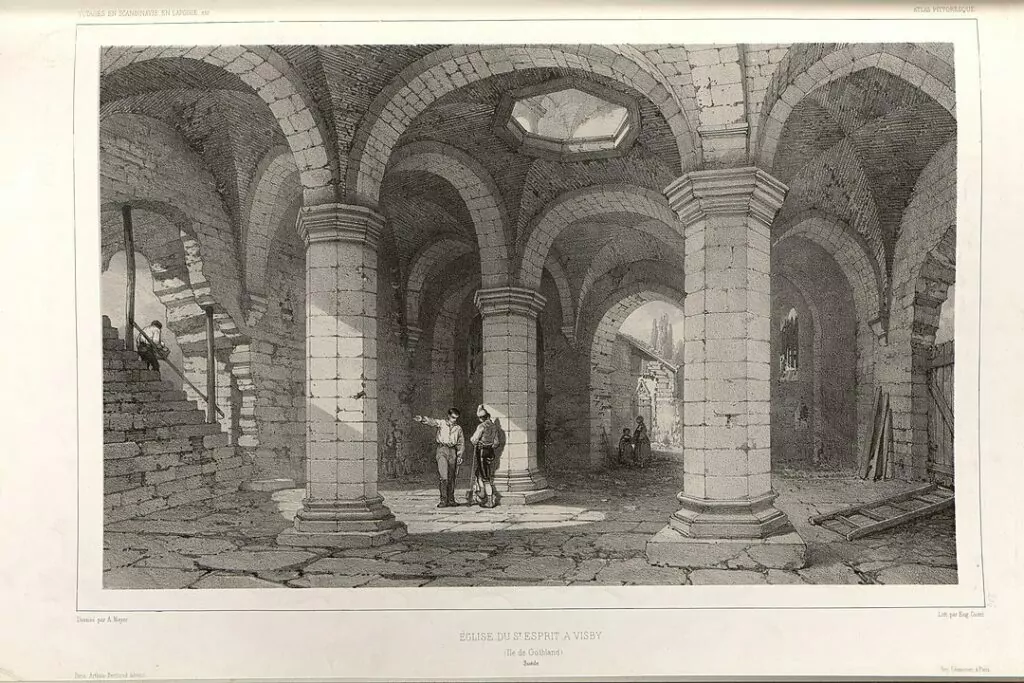
Find here: The Holy Spirit (Helgeand) church ruin is located at Norra kyrkogatan 3 in the centre of Visby on Gotland.'
19. St Catherine's church ruin in Visby
Sankta Katarinas kyrkoruin, or Sankta Karins kyrkoruin as it is also known, is a church ruin in Visby on Gotland. The original church was built by the Franciscan order as a monastery church for the Visby convent founded in 1233.
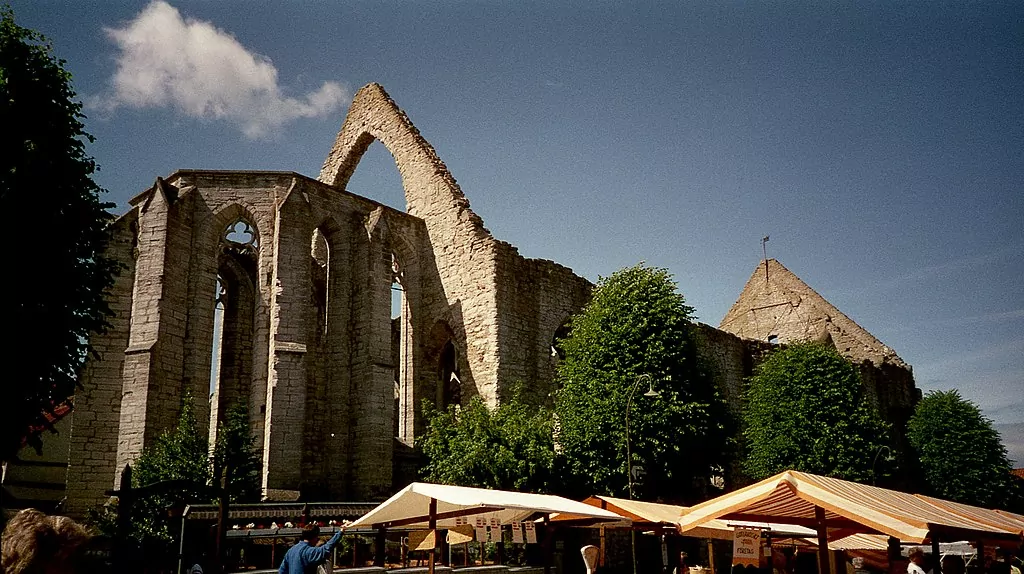
St Catherine's Church was originally smaller, but needed to be expanded over time. At its peak, in the 15th century, it was a three-aisle hall church with many tall windows.
The mighty church was never fully completed. In the 16th century it served as a hospital for a time, and later fell into disrepair. Today it hosts various events such as a Christmas market and concerts.
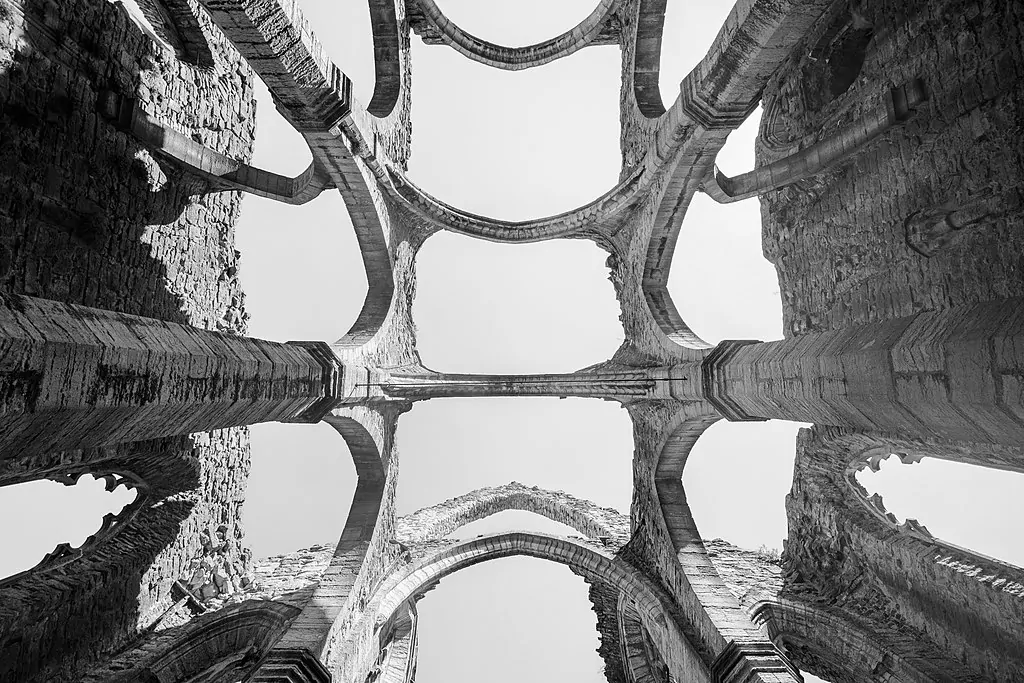
Find here: S:ta Katarinas kyrkoruin is located at Stora torget 2 in Visby on Gotland.
20. Only island church on Gotland
Bara ödekyrka was built on Gotland in the mid-13th century and served as a parish church. The church began to decay in the 16th century and was abandoned in the early 17th century.
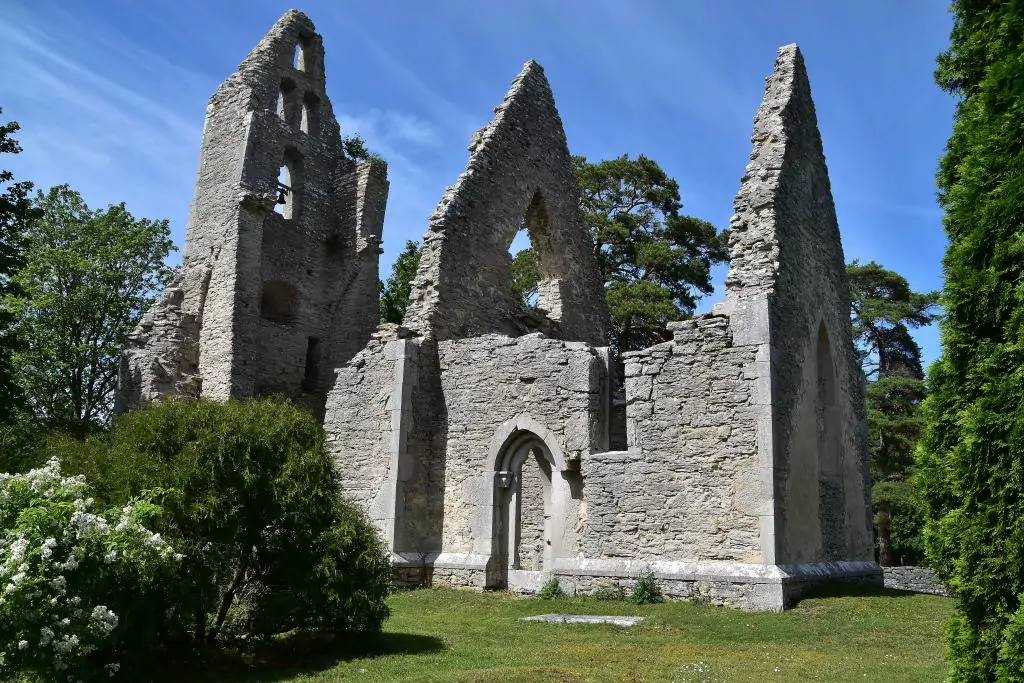
In 1923, the ruin was preserved, consisting of a square chancel and a rectangular nave with a tower. Some remains remain, including the baptismal font. The cemetery is still used as a burial ground.
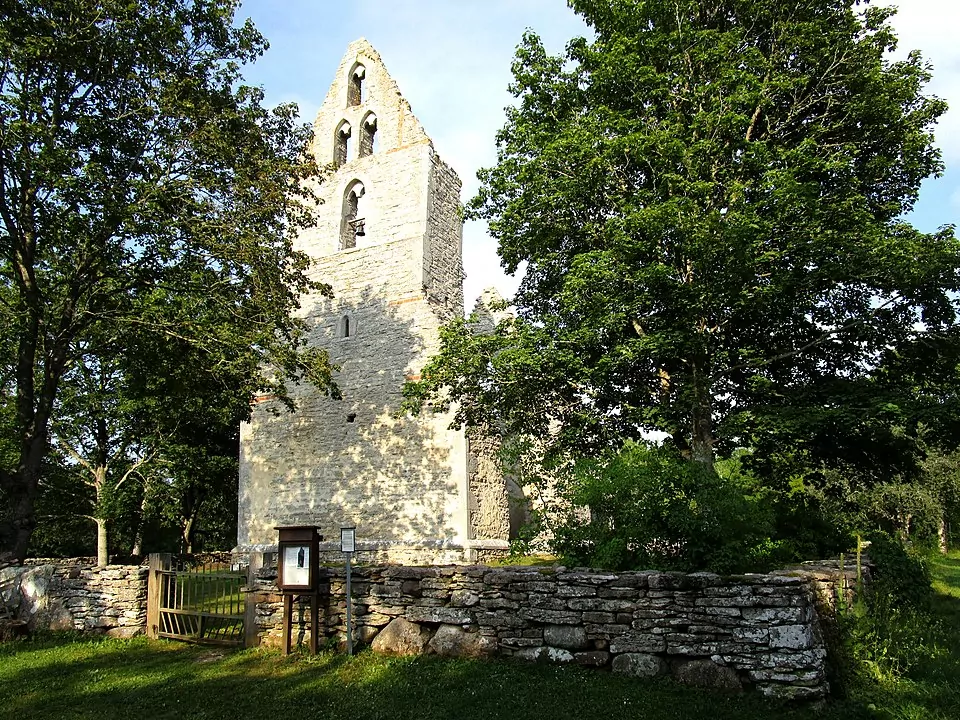
Find here: Take road 143 eastwards from Visby for about 20 minutes.
21. Roma monastery ruins on Gotland
Roma Abbey was founded in 1163 or 1164 by monks from Nydala Abbey, on the site of the Gotland court. The monastery consisted of a church, housing for monks and a building with a kitchen and dining room. The ruins you see today are from the magnificent monastery church, which was built from large stone blocks.
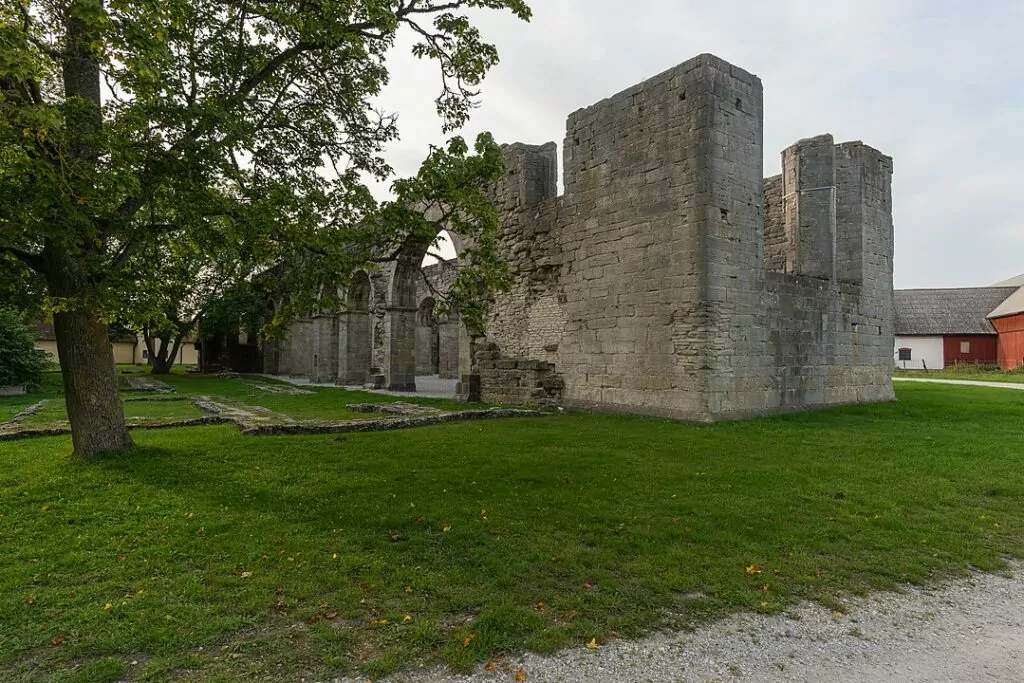
After the Danish Reformation, around 1531, the monastic properties were handed over to the king. The buildings that were no longer needed were left to decay. In the 18th century, County Governor Johan Didrik Grönhage built a new manor house using stone from the ruins.
During the Second World War, the site was used for military purposes. They built a military airfield and used the buildings for storage. Today the site is a popular tourist destination and theatre is often organised in the monastery ruins.
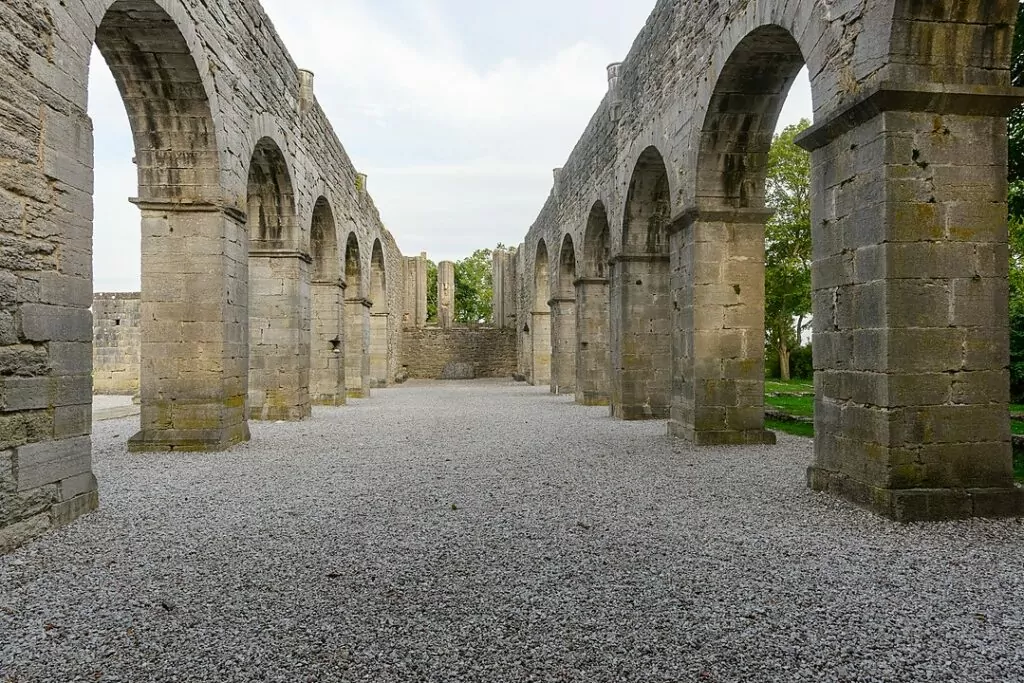
Find here: Roma Klosterruin is located in Roma Kungsgård on Gotland. Take road 143 south-east from Visby for about 20 minutes.
22. source old island church on Öland
Källa Church was built next to a sacrificial spring dedicated to St Olaf. The first wooden church burned in the 11th century, and in the 12th century a stone church with 12 metre high outer walls was built. The church could be used both for worship and as a shelter for the population, which is why it had very few windows.
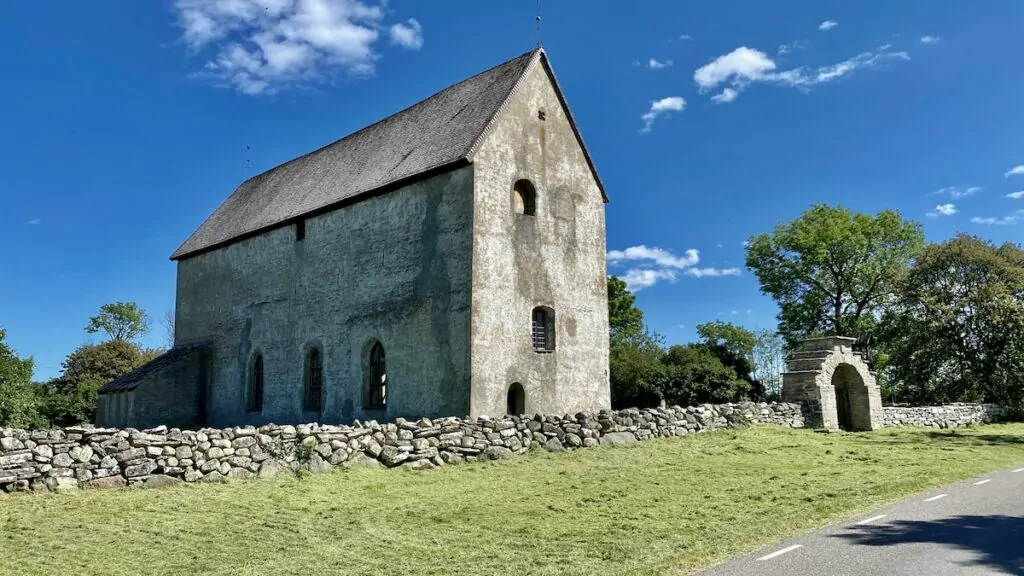
An island rune stone tells us that the population was Christianised at the end of the 11th century, and many pilgrims passed through here. Källa harbour, located next to the church, was Öland's most important harbour between 1600 and the beginning of the 20th century. Here, limestone, floor stones, stepping stones and tombstones were shipped to Sweden and other parts of Europe.
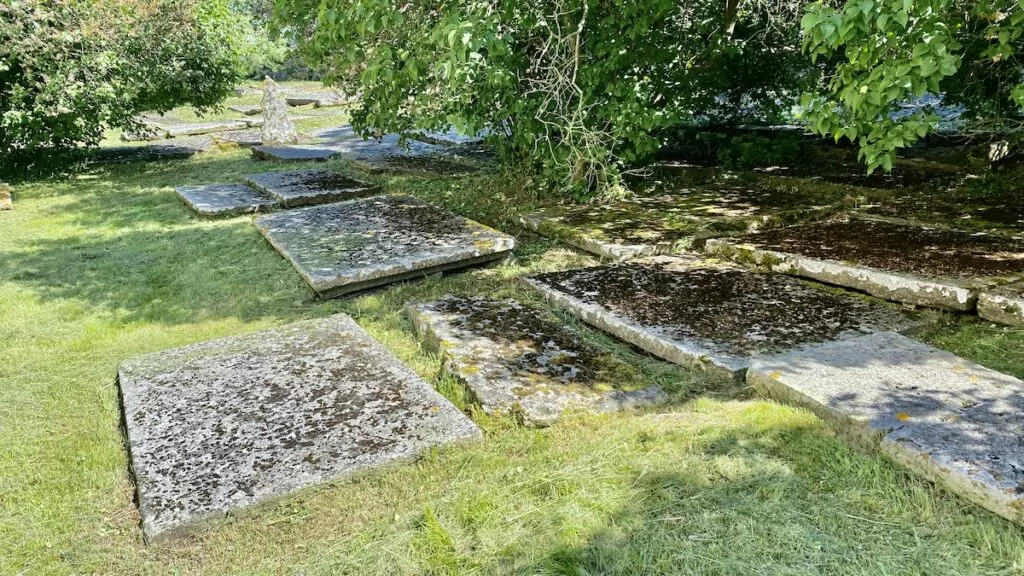
The cemetery is surrounded by a wall with four entrances, and the wall marks the boundary of the consecrated ground. Two of the gates are constructed of limestone from the Borgholm Castle, with massive oak doors. The northern gate was considered the abode of evil and dead criminals were carried in to a prepared grave after sunset.
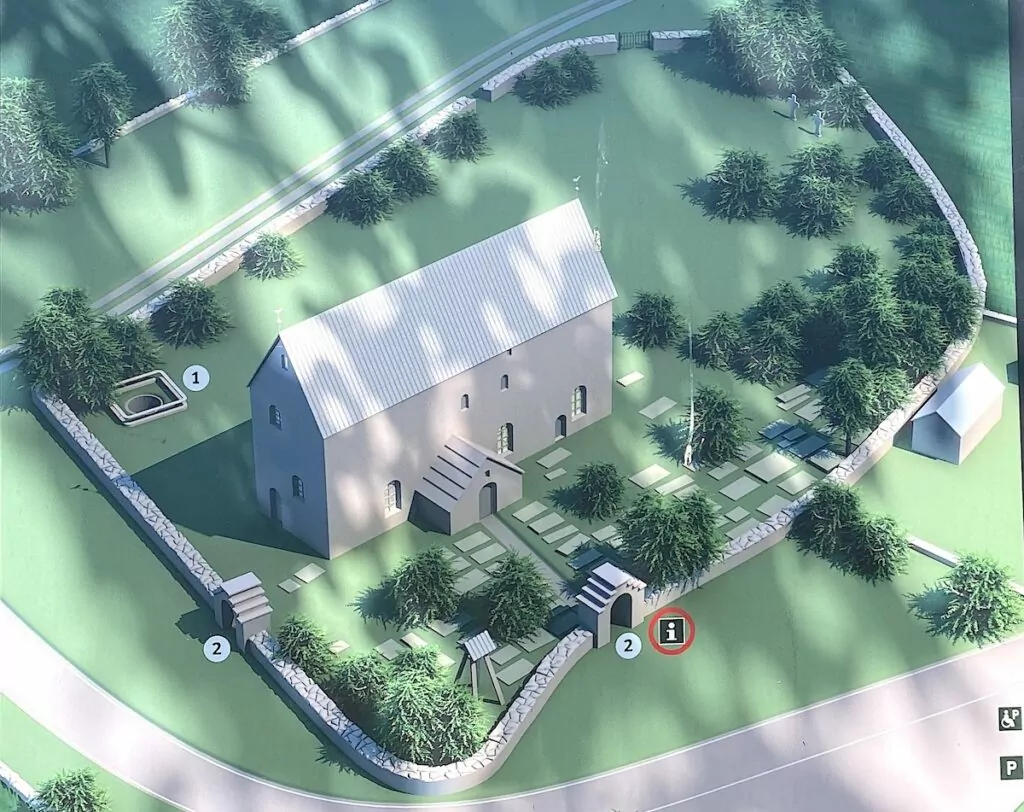
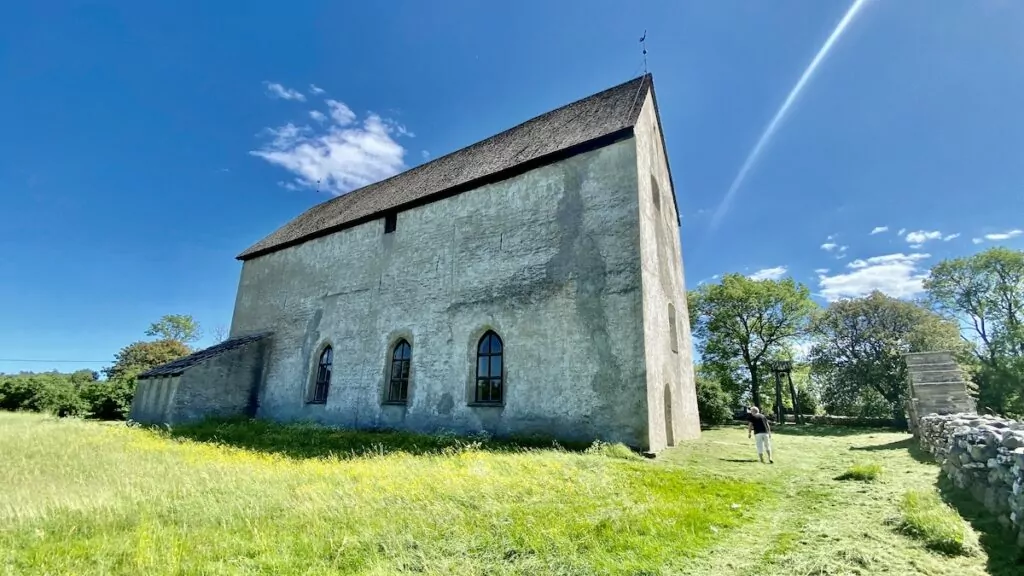
Find here: Källa ödekyrka or Källa gamla kyrka is located along the road to Källahamn on the eastern side of Öland.
23. St Brita's Chapel on Öland, Sweden
Built in the 13th century, St Brita's Chapel was a well-known landmark on the coast at Kapelludden. Merchants from around the Baltic Sea would sail here to trade, and the tall white gables and red-tiled roof could be seen from afar.
The chapel served primarily as a warehouse and protection against pirates, and secondarily as a place of worship. These types of churches are called merchant churches and St Brita's Chapel was one of six on Öland. There were "church sleepers" who were locked in the chapel if they were attacked and could not unlock it under threat.
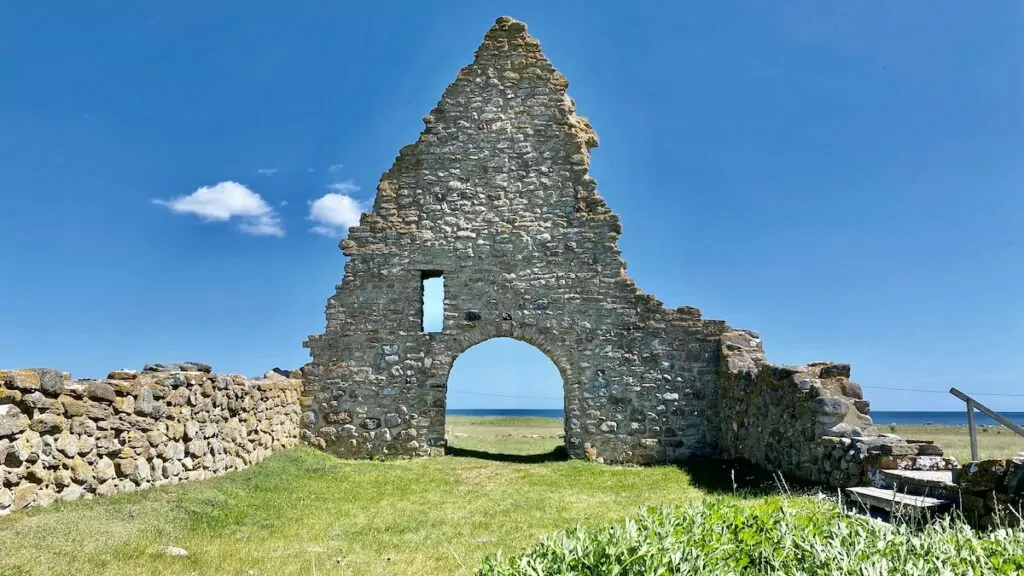
The name St Brita's Chapel was first mentioned in 1551 and comes from Brigida, an Irish saint. Merchants who left their homeland and could not be buried in the regular cemeteries were buried here, but had the patronage of St Catherine.
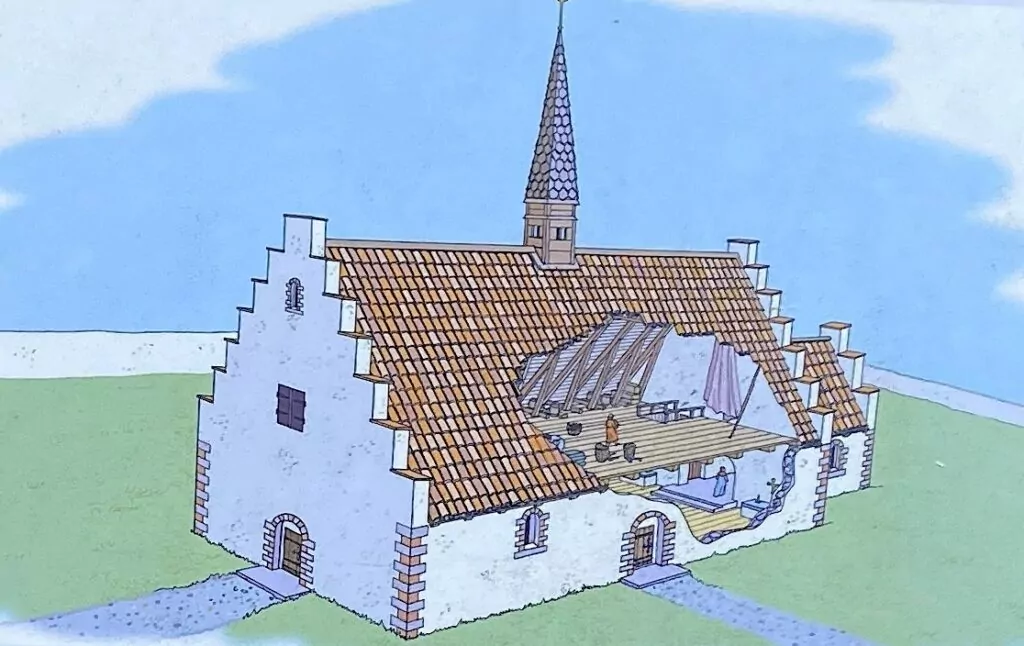
The trading centre around the chapel was called Sikavarp and was a major hub for trade in goods such as furs, cotton wool, dogs, beeswax, tallow, butter, meat, fish and salt. Here there was a large limestone cross as a sign of the market freedom guaranteed by the bishop of Linköping. Under the protection of the cross, the merchants could trade in safety and, of course, the bishop would tax the shops.
The cross stood in the same place as today 800 years later, but in a small square. People made deals and settled disputes in front of the cross. You had to tell the truth to him up there, otherwise you couldn't get in when time was up on earth.
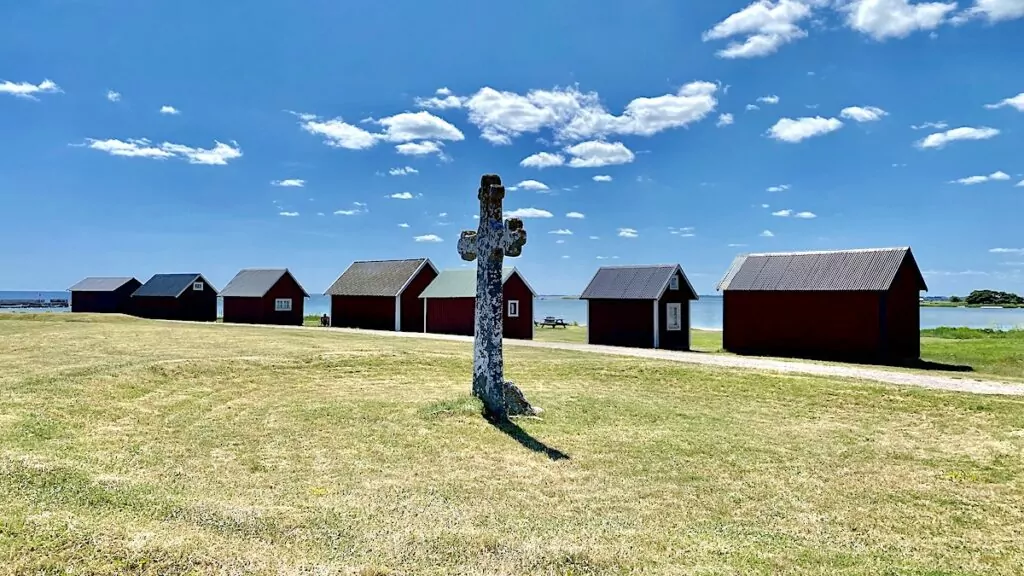
Find here: St Brita's Chapel is located at Kläppingevägen 99 in Köpingsvik, on western Öland.
24. St Knut's Chapel on Öland, Sweden
St Knut's Chapel was built in the 12th century and abandoned in the 16th century. The name derives from the Danish saint-king Knut, who was killed in an uprising in Odense in 1086. The name indicates that the site has had contacts with Denmark and the Danish Knutsgillene.
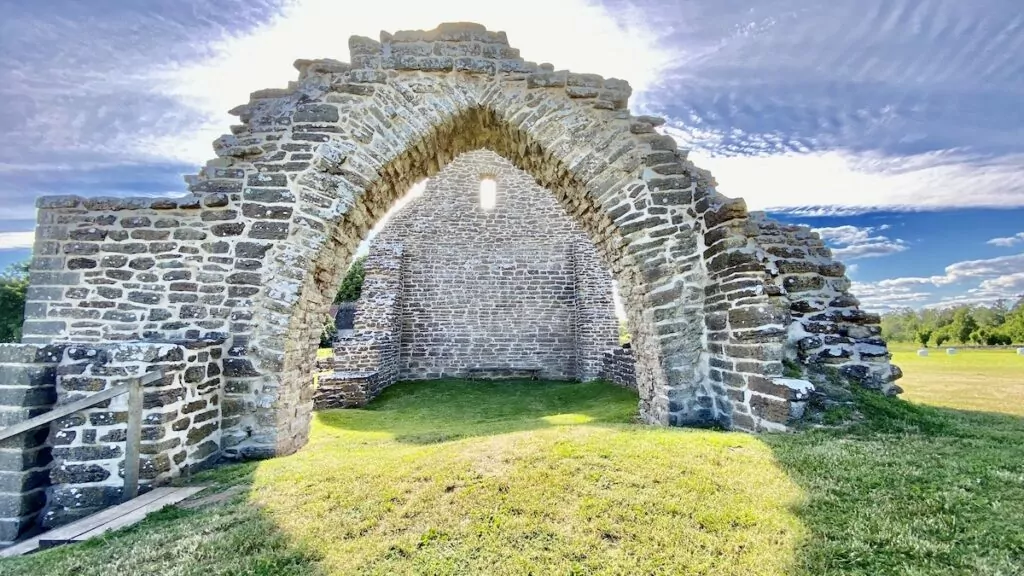
It was a strange time at the end of the 11th century when everyone was being Christianised, with miracles and saint worship.
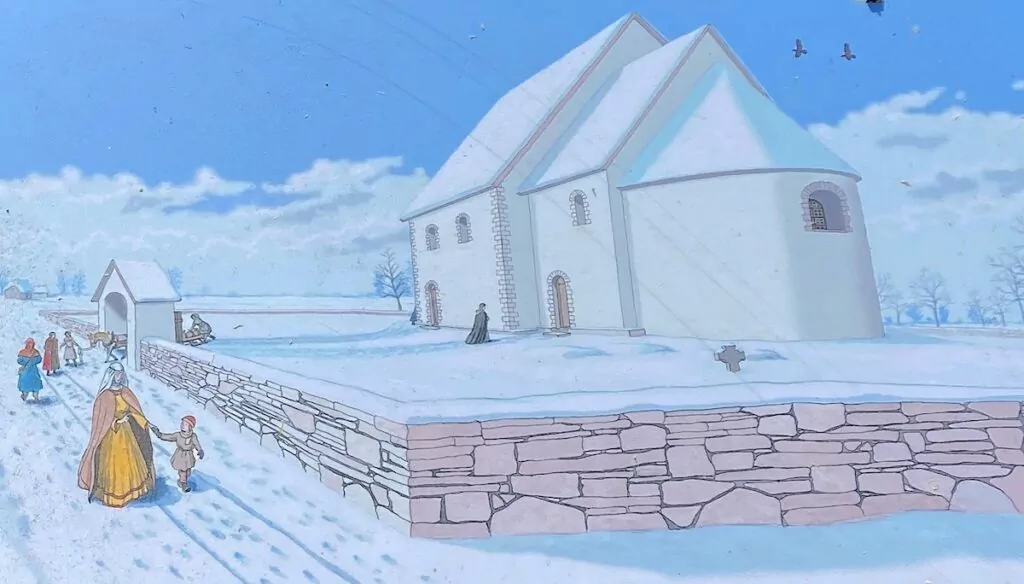
A stave cross, which was originally in St Knut's chapel, is now in Algutsrum church, as is an altar cabinet that is one of the largest on Öland. The altar cabinet was made in Lübeck at the end of the 15th century and in the centre of the cabinet you can see Christ, the Virgin Mary and St. Knut.
In the corners are several popular saints. At the top left is St Erik, King of the Swedes, and below the King of Norway, St Olaf - both were murdered. On the right is St Henry, Bishop of Finland, and below the Christian martyr St George in his shiny rush.
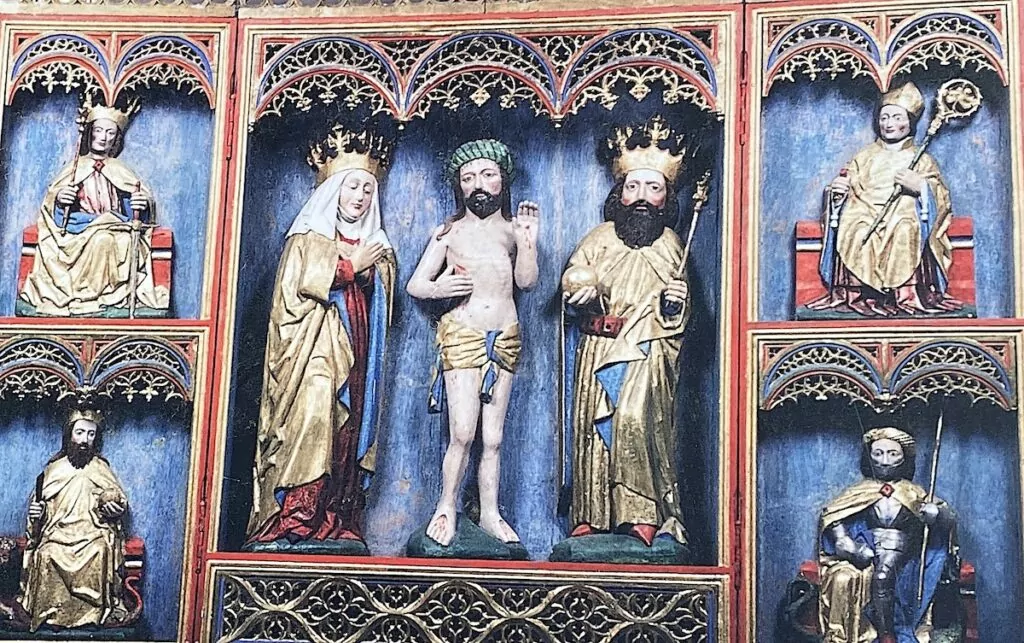
The chapel is located next to Öland's largest ancient castle "Gråborg". Gråborg is an old archaeological site and was reopened by Danish merchants during the great trade with Russia and Reval (today's Tallinn) in the 12th and 13th centuries.
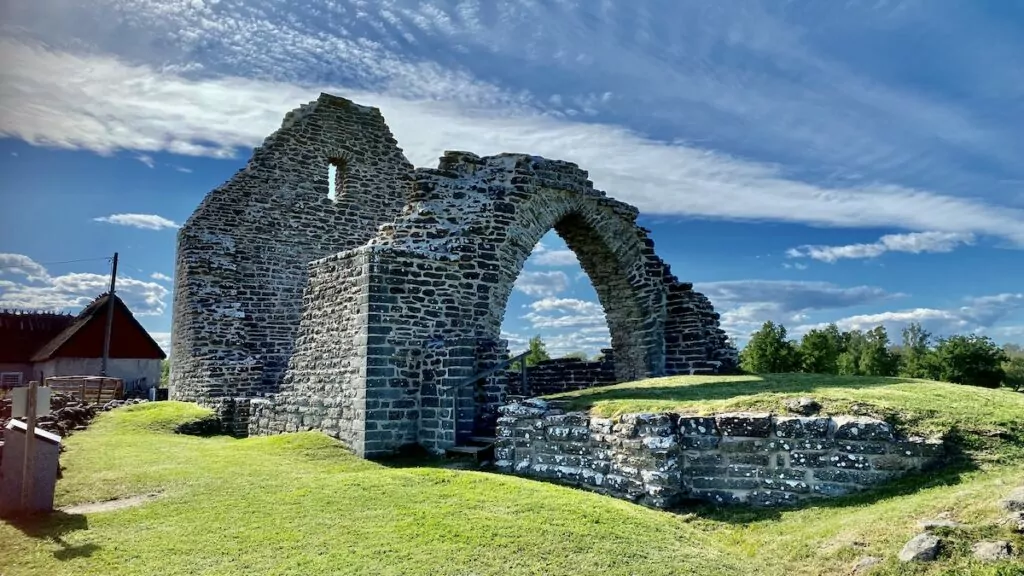
Find here: S:t Knuts kapell is a church ruin in Mörbylånga municipality on Öland.
25. Balkåkra church ruin in Ystad.
Balkåkra church was built in the 12th century. When Carl Linnaeus was travelling in Skåne in 1749, he thought the church was "small and covered", and the church was then called "Barkare kyrka".
In 1773 Ebba Christina Sjöblad from Marsvinsholm was given the right to dispose of the income from the church in return for managing Balkåkra church. After her death, the administration passed to her son Erik Ruuth who died in 1820, and who is buried in the Ruuth tomb in Balkåkra church.
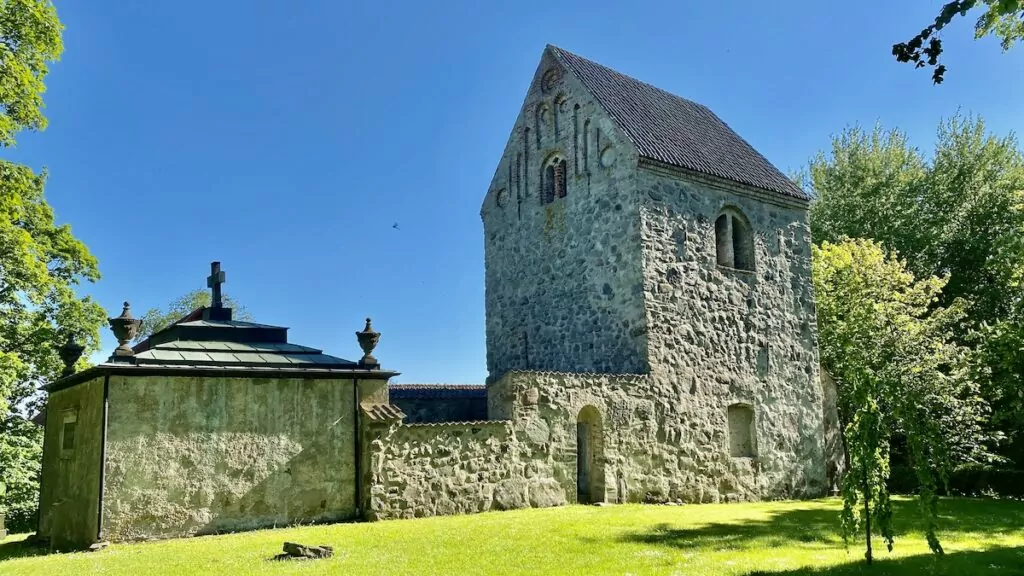
In the 19th century many medieval churches were demolished, but Balkåkra survived and the arches in the church were bricked up. During the 20th century several renovations were made to preserve the church and one of those who helped was Magnus Brahe from Krageholm.
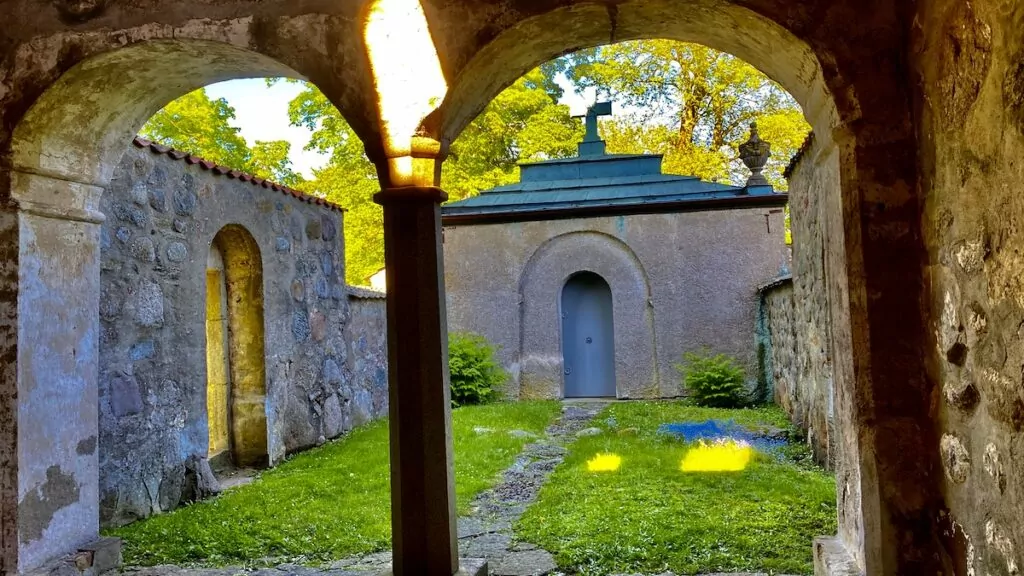
Find here: 8.6 kilometres northwest of Ystad, take Östra Balkåkravägen from E65 on Malmövägen. Drive for about 5 minutes until you reach Balkåkra kyrkoruin.
Some more cool church ruins in Sweden
There are of course even more church ruins in Sweden than those listed above. Here are some more Swedish church ruins:
- Björksvik church ruin
- Brunns kyrkoruin
- Gärdhem church ruin
- Kungsäter church ruin
- Rya kyrkoruin
- Selånger church ruin
- Södra Härene church ruin
- Ukna church ruin
- West Ed's church ruin
Do you have tips for other church ruins in Sweden that you think should be on the list?

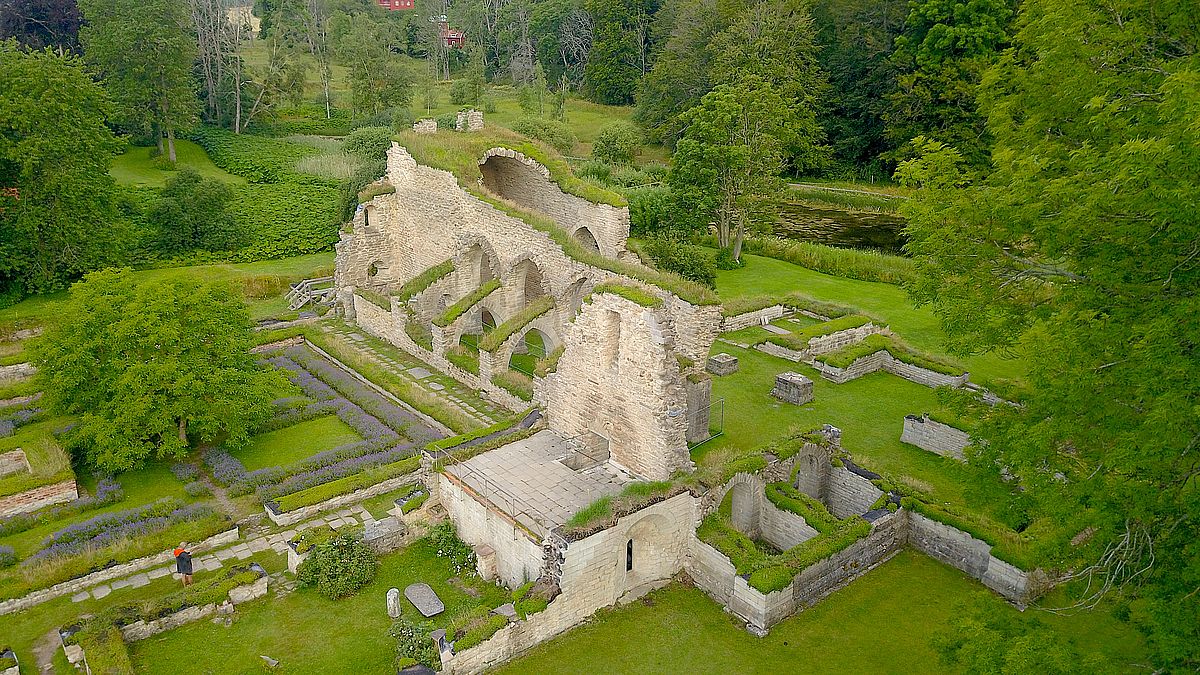










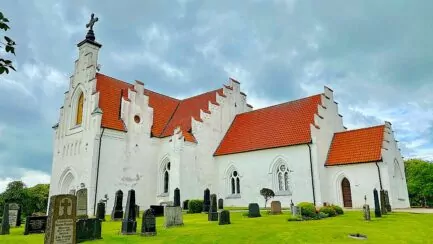
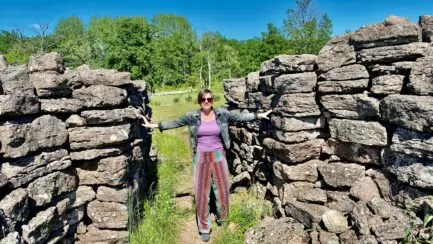
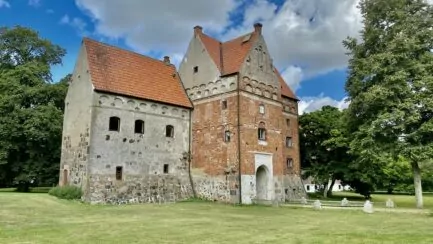
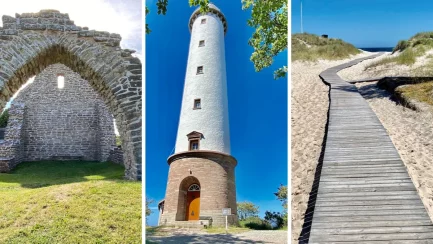
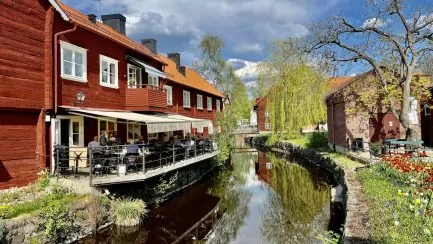
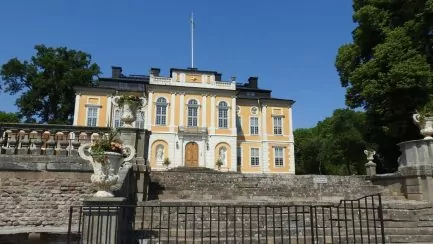



Nils-Åke Hansson says:
There is another one in Å parish on Vikbolandet.
https://uddautflykter.se/guide/ostergotland/a-kyrkoruin/
My father was born there in Å parish.
09 January 2022 - 10:05
Helena says:
Thank you so much for the tips!!! 🙂
10 January 2022 - 19:23
Ann-Louise Paulsson says:
Church ruins are also a favourite. 🙂 Have visited those in Sigtuna, those in Visby and Sankt Knuts chapel on Öland. Have also been to Vreta Kloster but did not think about the ruin at the time when I was there (was there with American friends who had ancestors in the area so the focus was on that). High on my wish list for next summer is Alvastra.
My tip today is Lemnhult's church garden outside Vetlanda, where there is also an interesting story about why the church had two gates instead of one and what happened when the church burned down.
09 January 2022 - 20:32
Helena says:
Glad that you also like church ruins! 🙂 Gotland we must travel around properly, we have been there very little, unfortunately. Alvasta is recommended, very nice! Thanks also for the tip on Lemnhult ruin!!!
10 January 2022 - 19:24
bmlarsreseblogg says:
It is probably just to realise that we prefer beautiful churches to ruins. Of the churches, I was able to tick off 12 (even though I haven't visited the beautiful church of Habo, which is not far from here), while we only visited Alvastra, Roma, St Brita and of course Gudhem of the ruins. Then again, we have strolled around the ruins in Visby on several occasions, but have not investigated them further.
09 January 2022 - 20:59
Helena says:
Yes, whole buildings are much more beautiful, but the ruins can be a bit exciting too 😉 After all, you have seen several of these too!
10 January 2022 - 19:25
Maria/emjis says:
Aren't the ruins exciting! Alvesta is something special! Especially if you are there in the evening...
Feels like the list can be filled with many in Skaraborg and Skåne! But it will be later!
10 January 2022 - 1:41
Helena says:
Sure it is, and agree that Alvastra is nice! We slept there at night in the car park, so we were also there in the evening 🙂.
10 January 2022 - 19:26
Lena+i+Wales+och+Spanien says:
Of these I have not visited many. I have visited Vreta, Alvastra and Gudhem and some in Visby, but I don't remember which ones. Some relatively neighbouring ones I should have visited, but have not.
There's something special about church ruins, a bit magical and spooky, and it sparks the imagination.
12 January 2022 - 10:33
Peter says:
Hi Lena! It's been fun to see and read about all these historic buildings in Sweden, and we really hope we get to Gotland this summer. Glad you are writing and take care of yourself.
Peter
12 January 2022 - 18:24
Lars Löfling says:
Varnhem consists of one of Sweden's most interesting churches (with the graves of 4 Swedish rulers and the grave of Sweden's founder (BirgerJarl)), ruins of the old monastery and one of Sweden's oldest church buildings (Kata Farm).
16 August 2023 - 9:45
Beata says:
Thanks for all the tips. It's time to start planning our spring excursions! We've visited many of Gottland's church ruins but missed two...got to go back! Absolutely stunning! Still wanted to visit the island in autumn to experience it in all the beautiful colours and get a contrast to the baby greenery of spring. Live near Ystad and thanks to these tips learned that there is a church ruin nearby!
13 January 2024 - 12:58